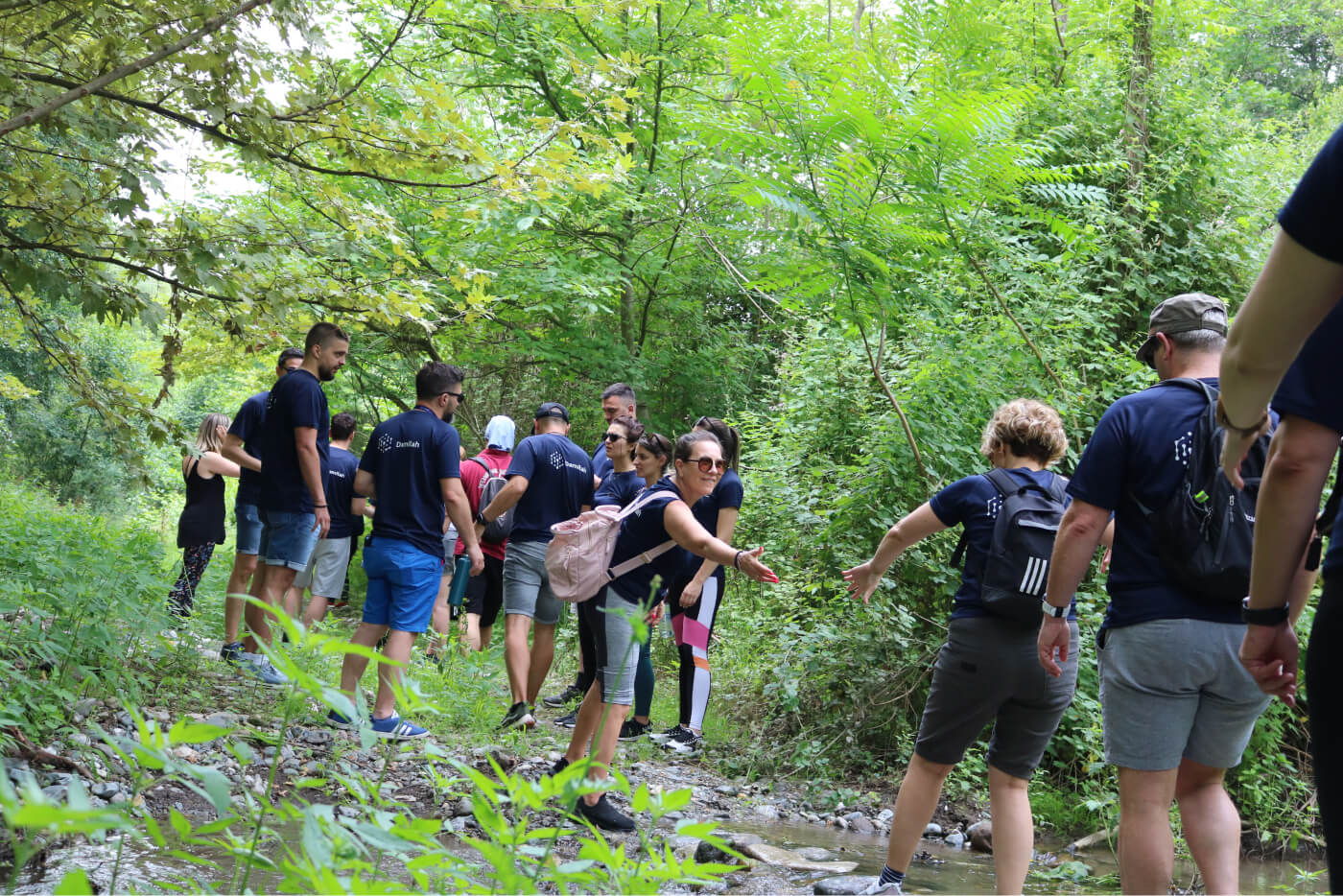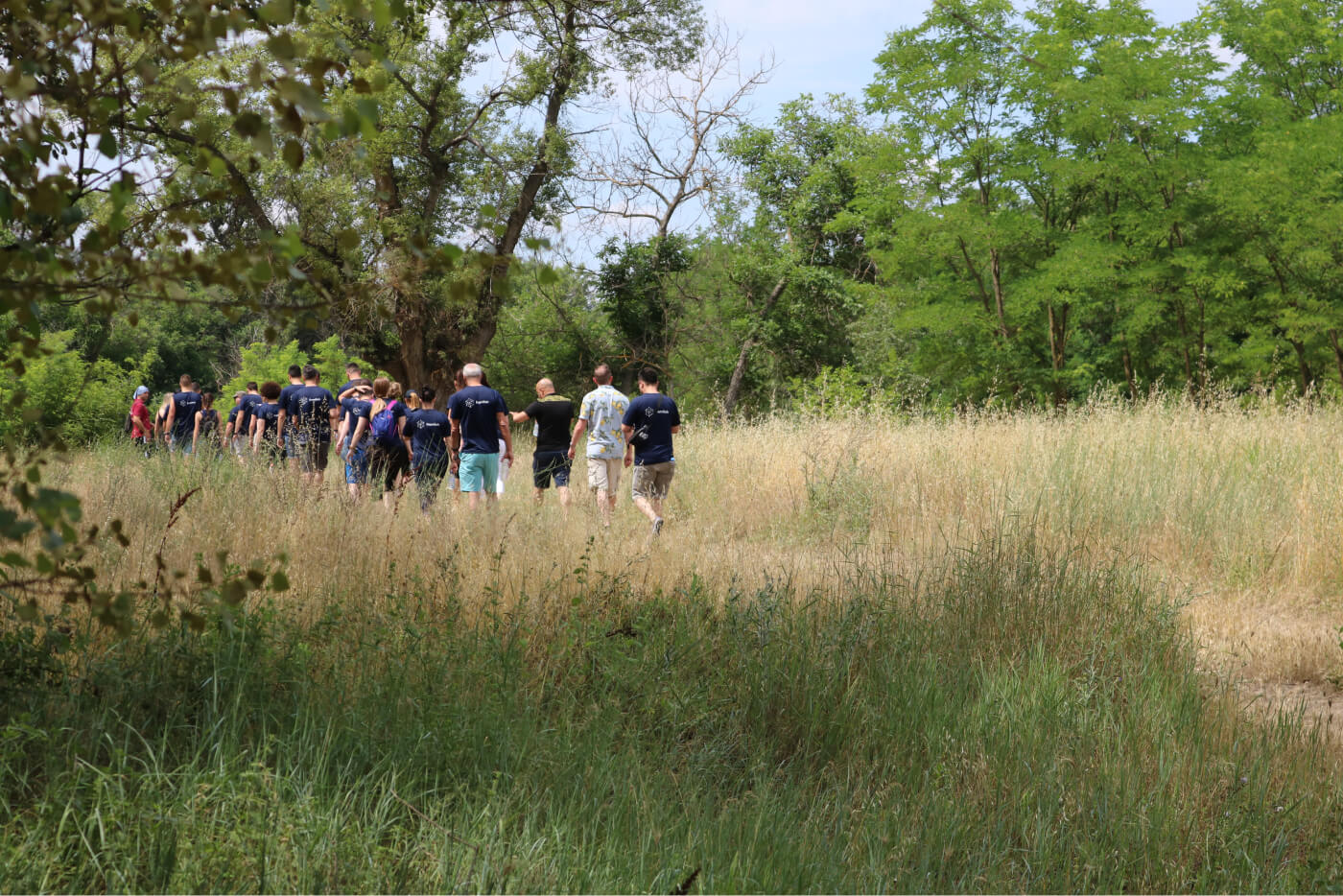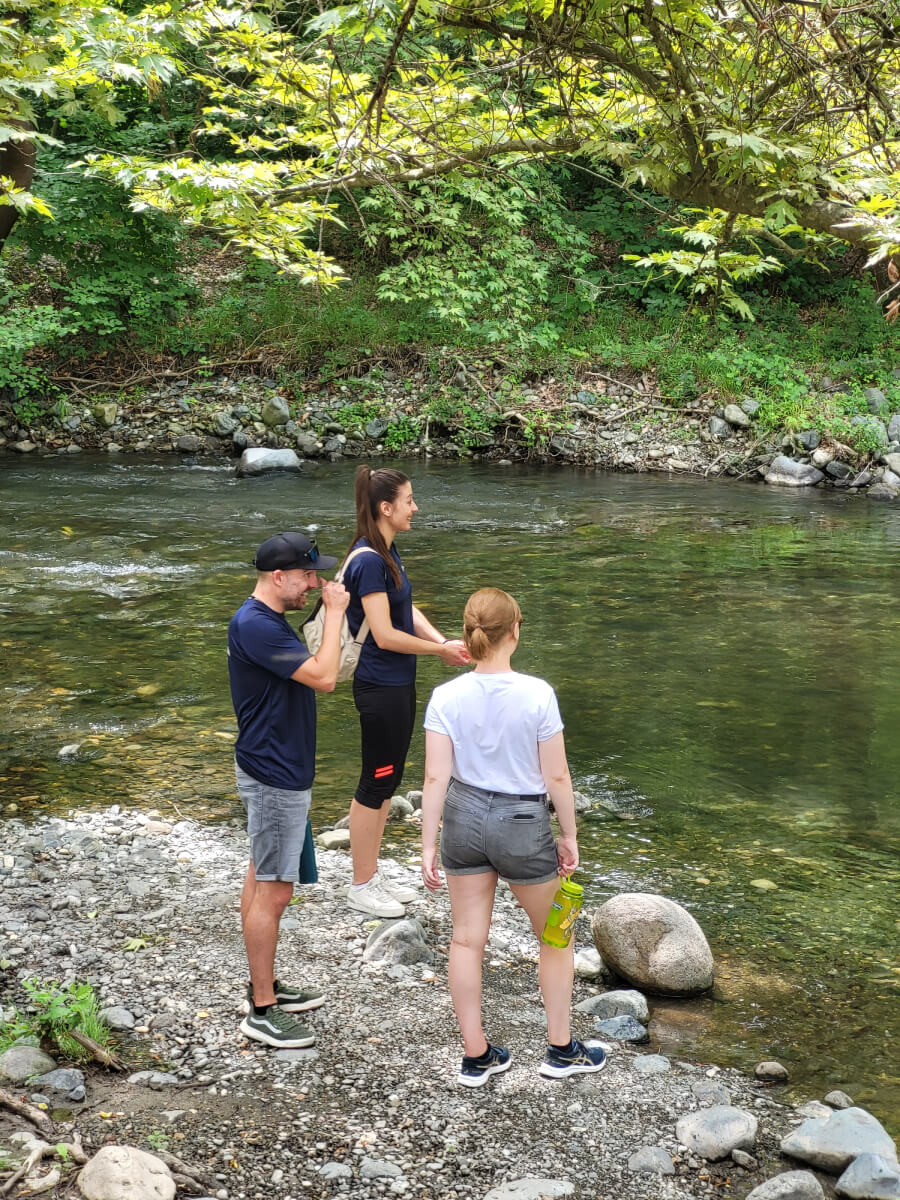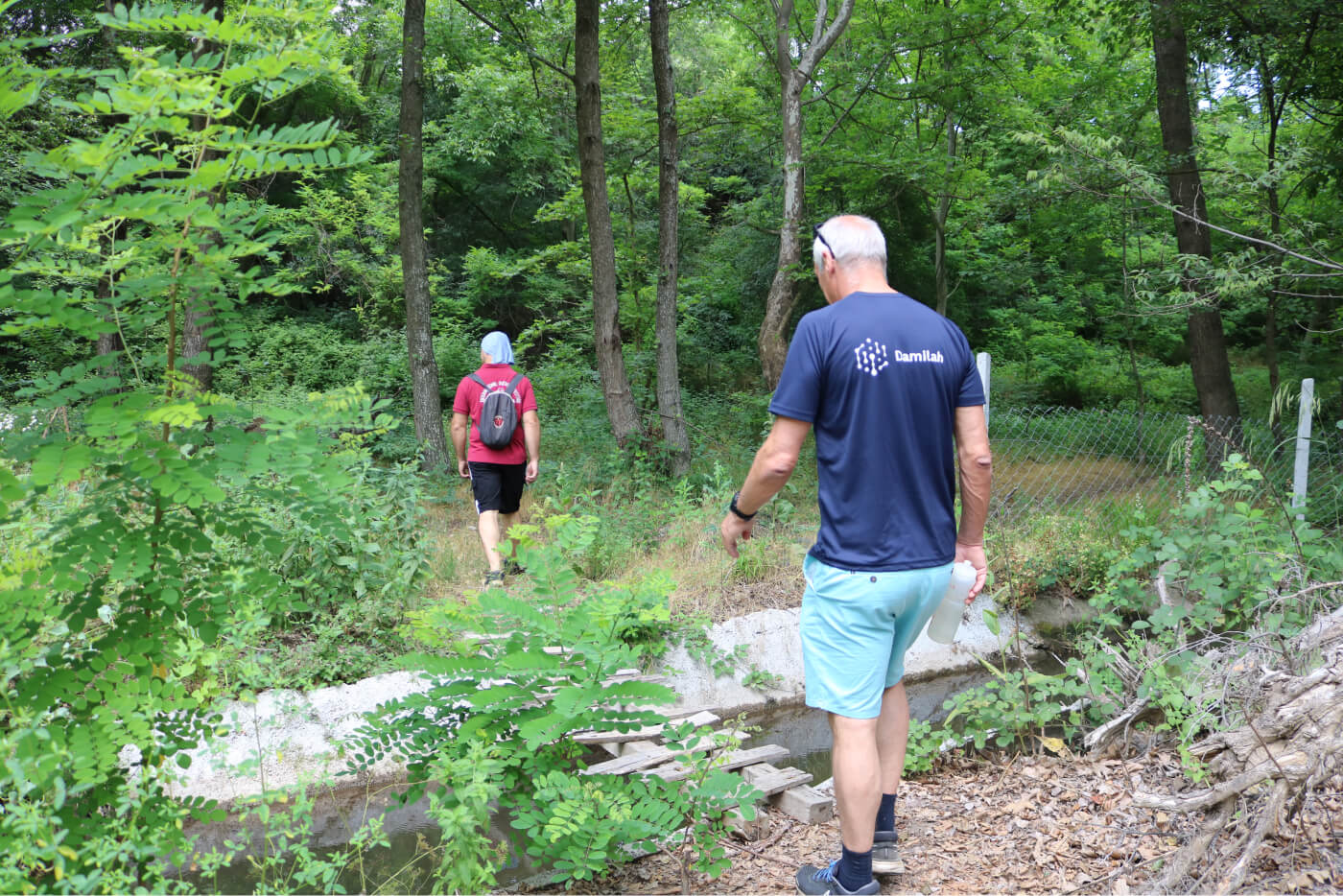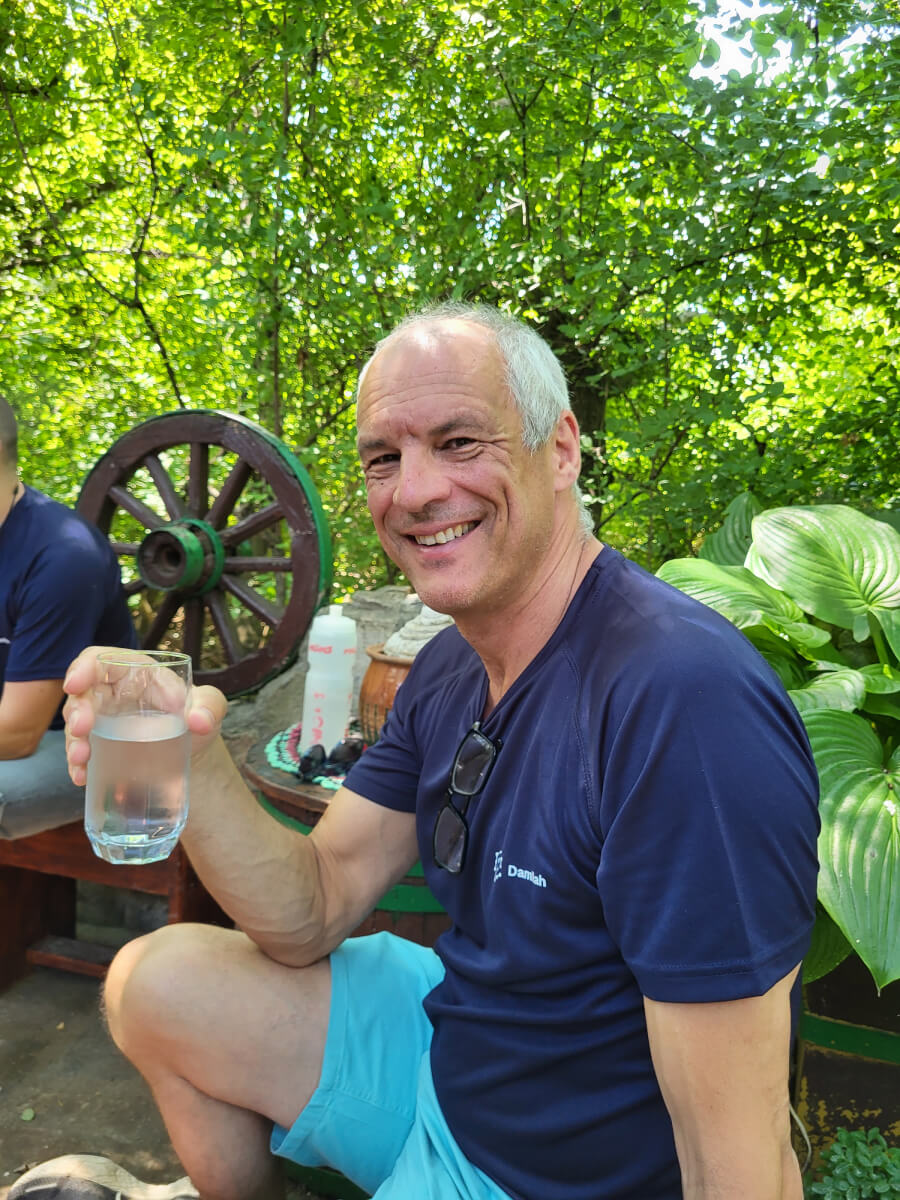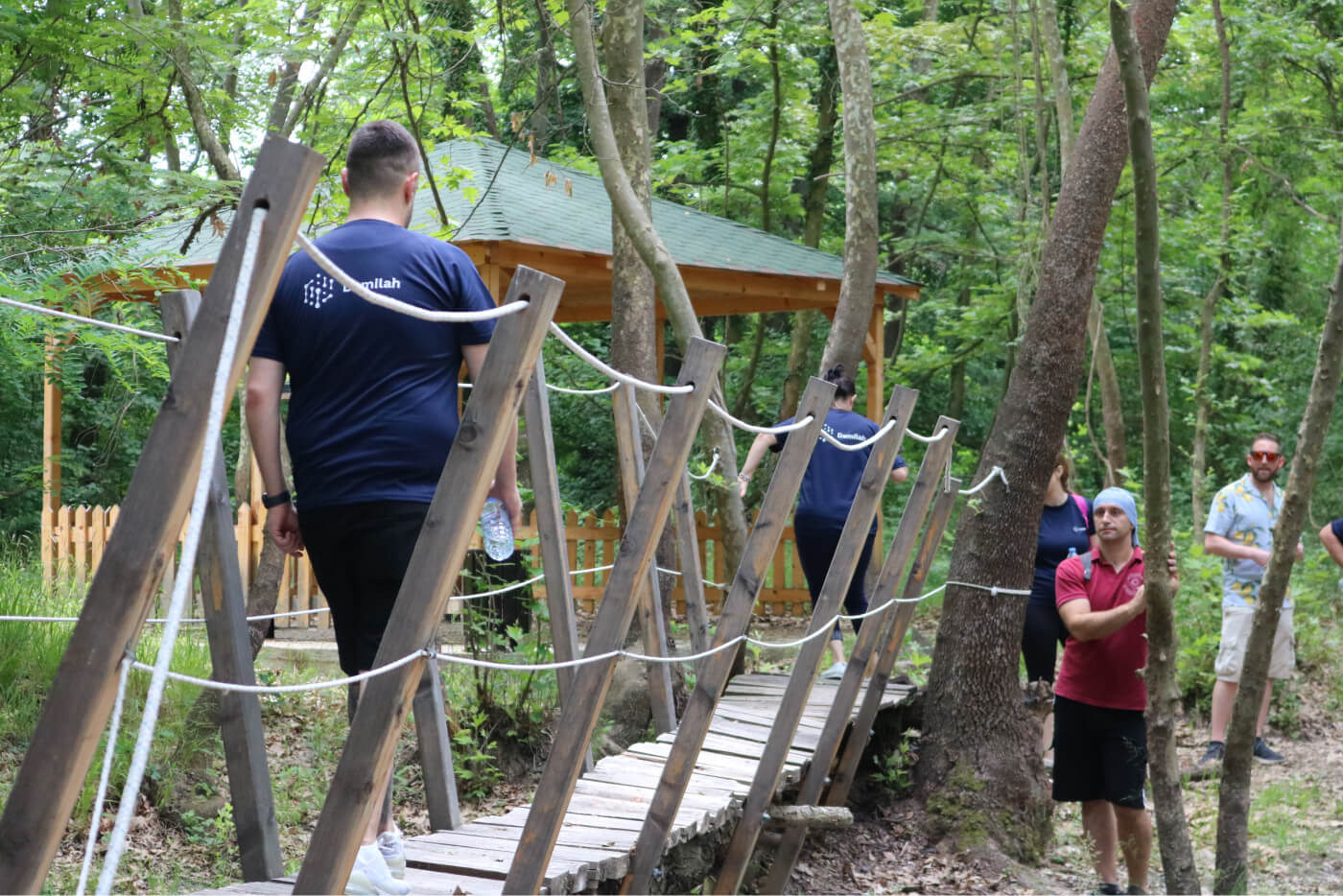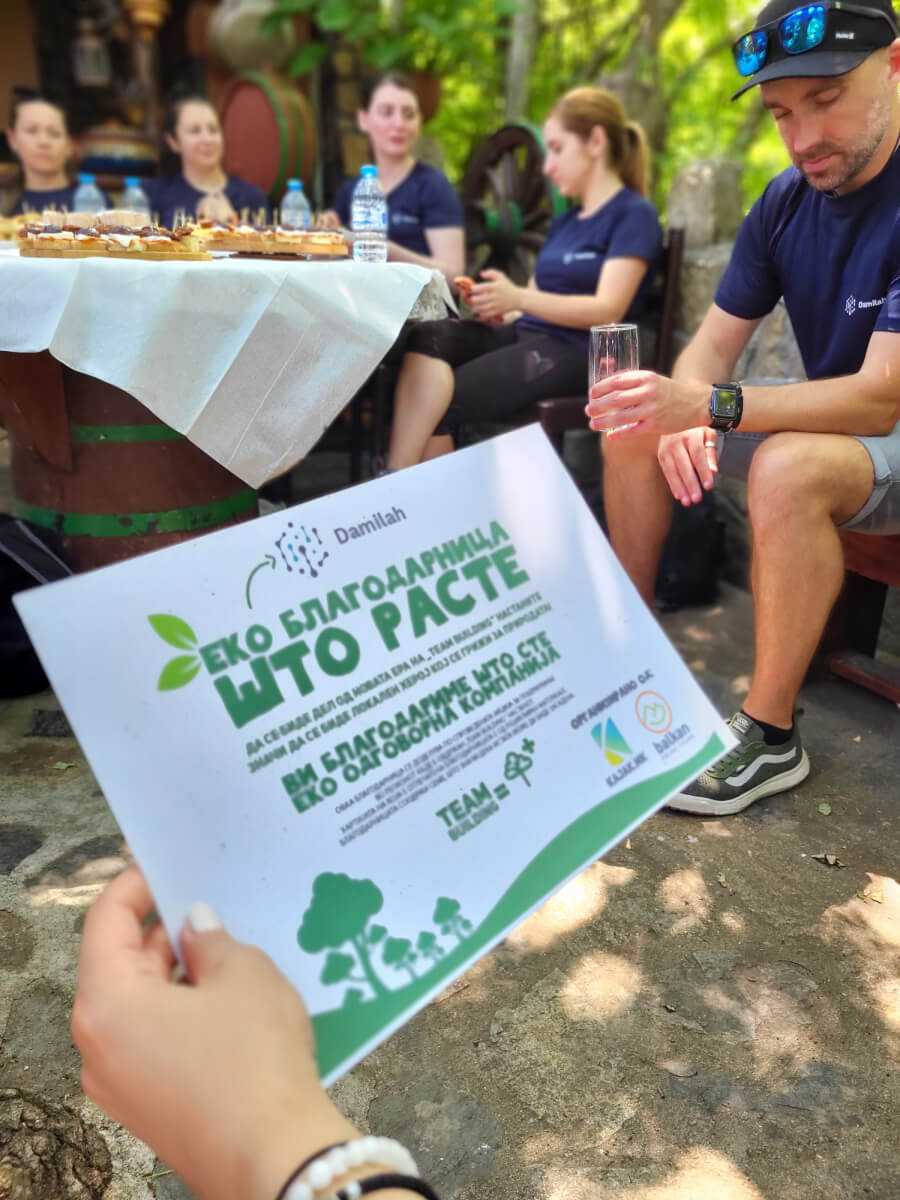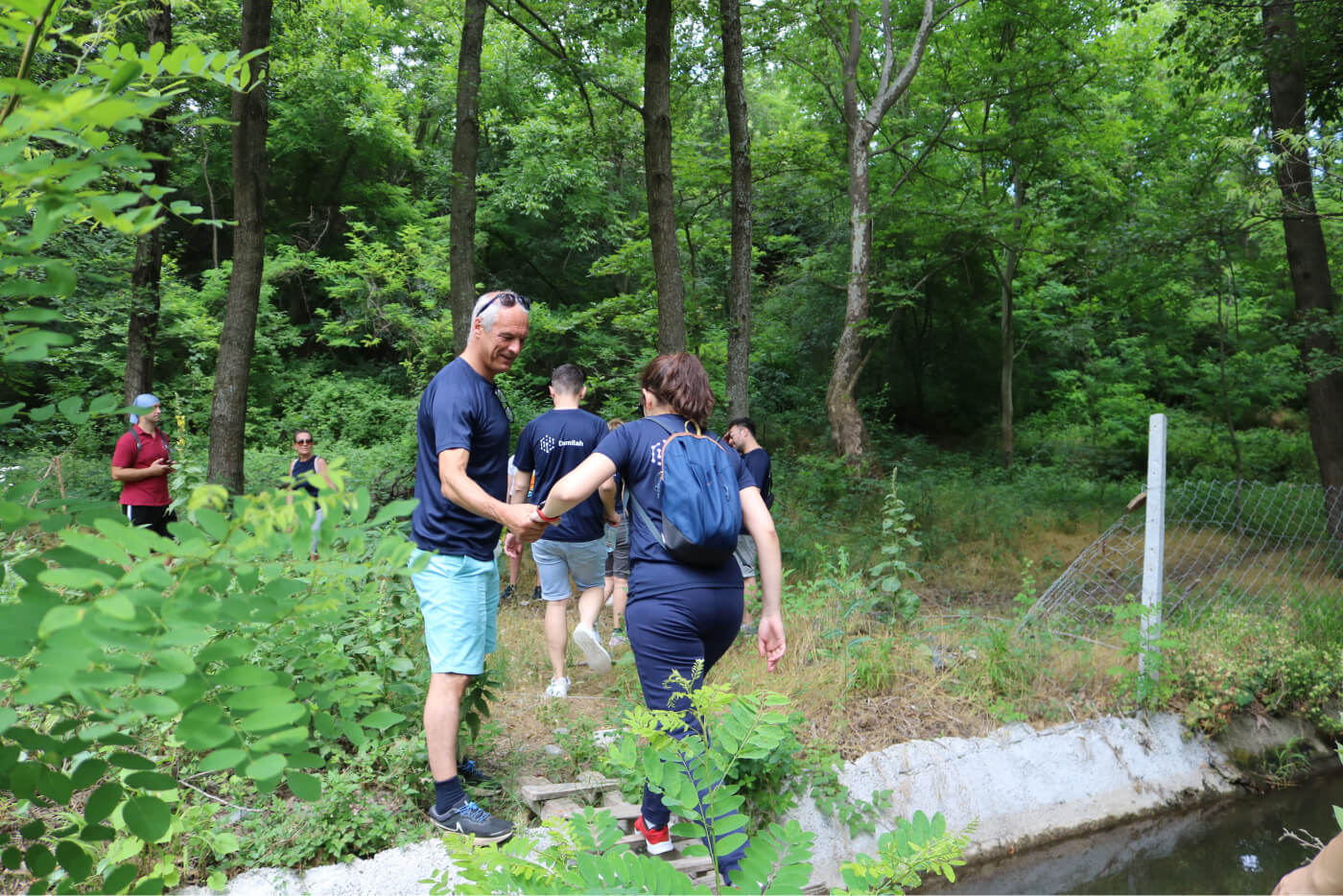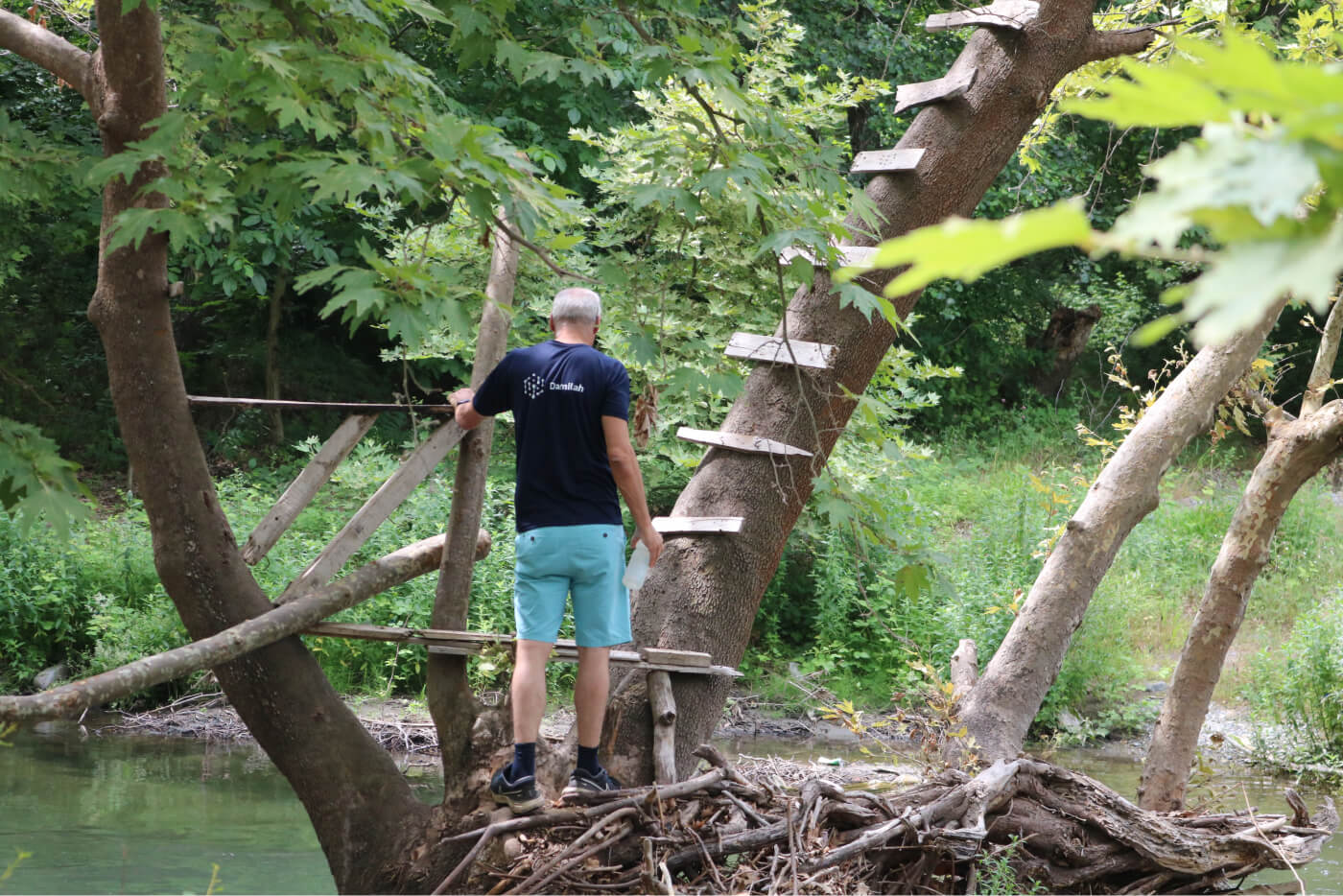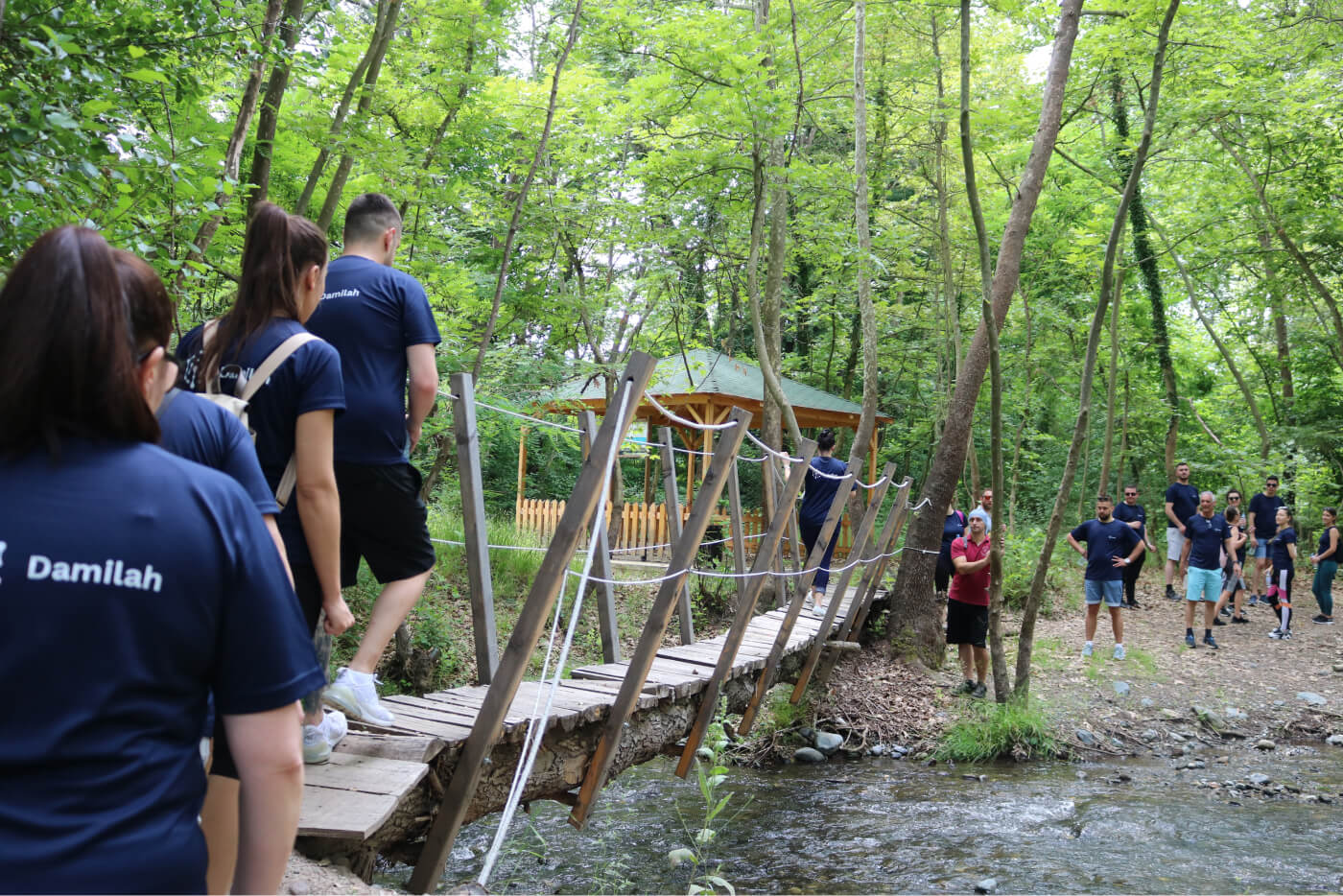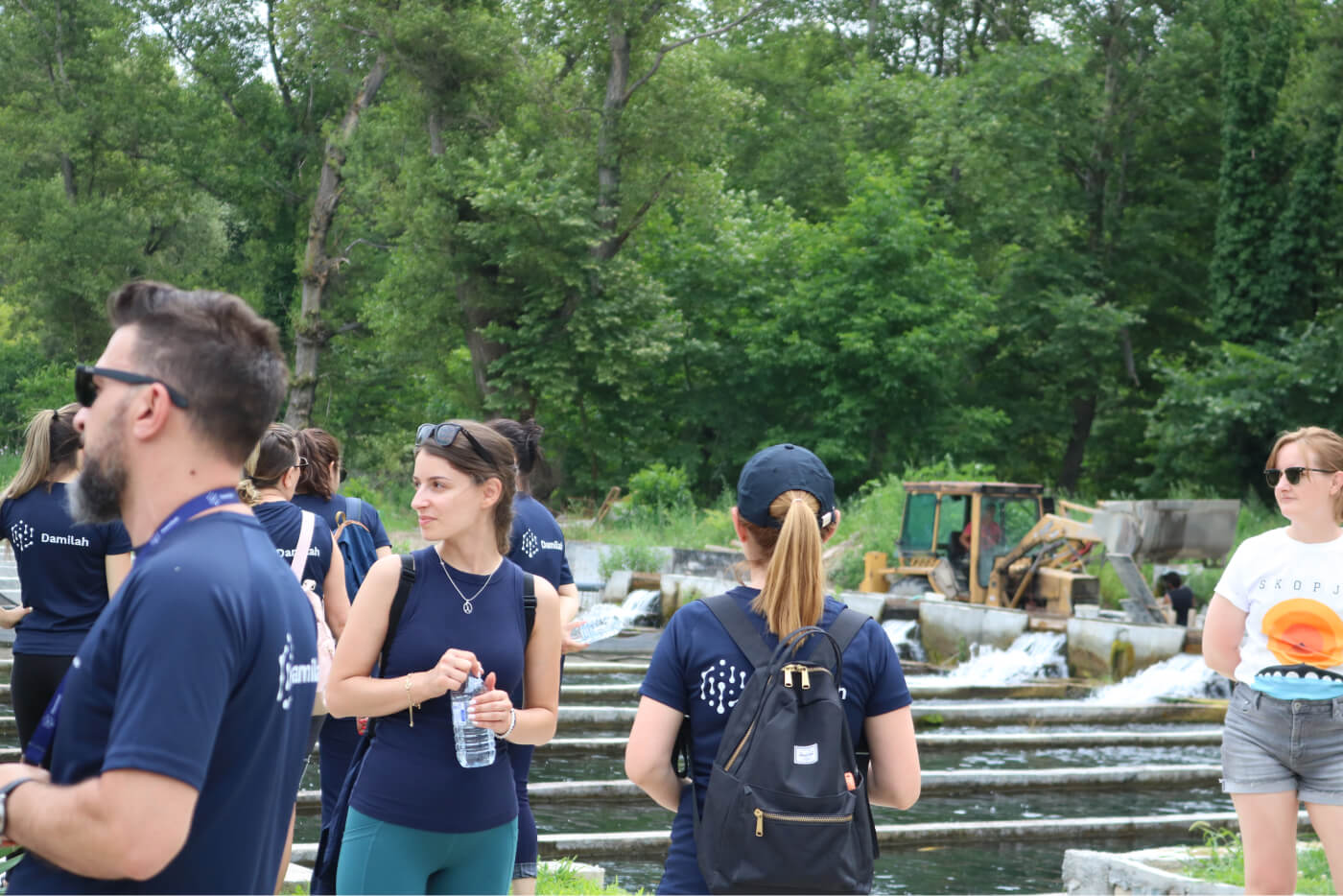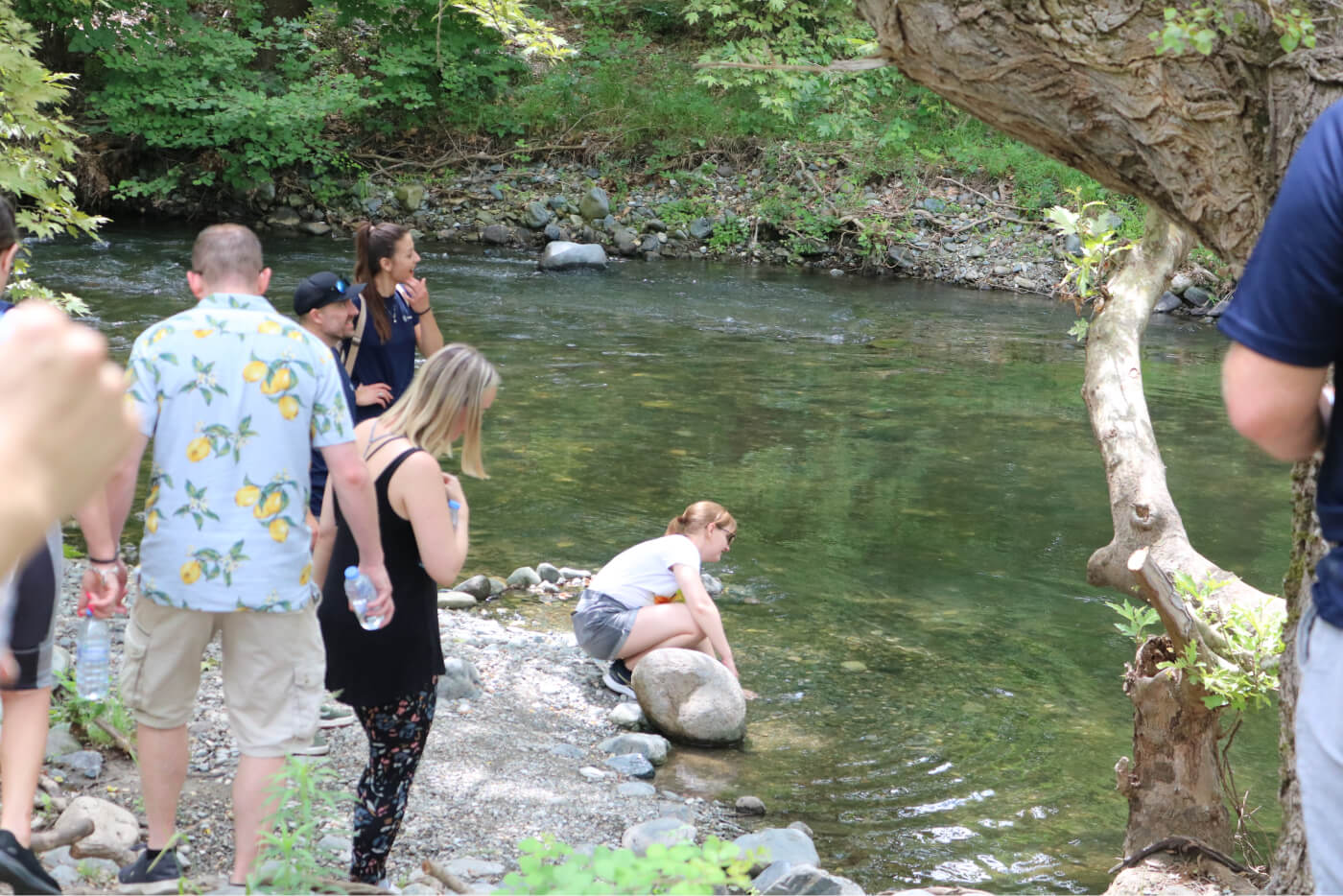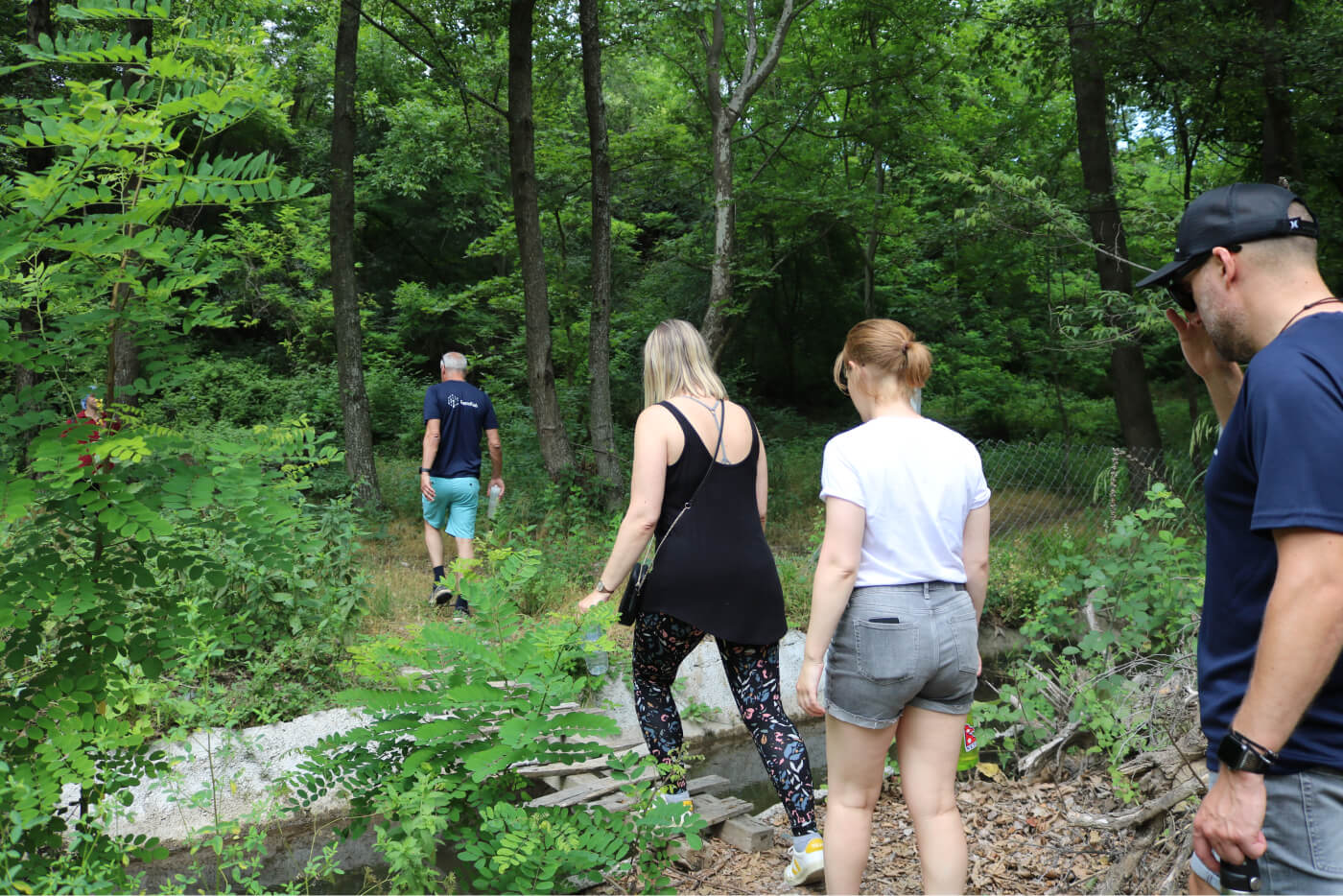Delivering great software on time for our customers comes down to effectively managing four key elements: scope, risk, quality, and talented people. In this series of articles, which accompany our Tech Talks video, we take a closer look at each one individually.
Here, we tackle the thorny topic of scope and scope creep…
We were recently working on a project for a customer that required us to re-architecture a solution to help deliver some key mid-term goals for their business. The project had been carefully scoped, and a roadmap produced.
However, our customer received some important feedback from their prospective customers. The solution would need an additional feature in a short timeframe to enable them to secure a contract. That immediately shifted the scope of our project, as this new requirement suddenly became a top priority.
In many cases, this kind of pivot may cause a significant problem by adding a large amount of additional work which could jeopardise the success of the entire project.
But it didn’t for us. We were able to quickly re-prioritise the tasks involved, allowing us to complete the essential elements on time and extend the deadline for the rest. That meant we delivered the most essential value for the client, fast, and the project was still completed in a satisfactory way.
Such a scenario, where scope changes are required mid-project, will be familiar to anyone involved in software development: scope creep can be one of the biggest risks. Left unmanaged, it can result in delays and unsatisfactory outcomes for both the client and the developer.
We therefore believe it’s vital to pay close attention to managing scope, from before a project even starts, and right through to the end and beyond.
The main causes of scope creep
In our experience, scope creep – or ‘gold plating’, where unnecessary features are added to a product – usually comes from one of two places.
The first is the product manager or evangelist. Understandably, they always want the best product they can have – that’s their job. And, to achieve this, it’s important that good ideas are thrown in during the development process. But the constant danger is that, if you add something in, you don’t take something out. When that happens, and we’re working to a fixed delivery timeline, quality is likely to be compromised or, worse, the whole project is likely to fail.
The second is on the technical side. There may be a desire to create a technological standardisation – for example, a new way of accessing data in a program – which invariably creates more work. That’s often for very good reasons, and it might also be the case that this has to be prioritised ahead of everything else, because of the value it could bring to the business and customers. But the effect it will have on the project has to be acknowledged, as there is usually only a finite amount of time and effort available.
Strategies for avoiding scope creep
Here are our four main approaches to keeping a project on track:
1. Everyone takes responsibility
Managing scope is not solely a delivery manager’s job. We believe everyone needs to play a part – and that includes the customers with whom we work in partnership. If everyone involved has a transparent and honest relationship, and keeps the lines of communication open, scope issues can be kept to a minimum.
2. Working closely with customers
If we can create a clearly defined scope with the customer from the outset, we are usually able to hit the ground running and very few issues will occur. When the scope of a project spirals out of control, it can nearly always be traced back to a failure to recognise changing priorities in a project and adjust the plans accordingly.
3. Agile processes with regular feedback loops
We use agile development processes that involve working in short sprints, usually two weeks at a time. That’s because, at the end of every cycle, we’ll share our progress with the customer and obtain their feedback, allowing us to make small, incremental improvements. It’s an excellent way of ensuring the customer is getting what they really need – and nothing they don’t need.
And, best of all, it ensures we don’t miss any gems. Our experience tells us that if you wait until everything is completed, you miss the chance for domain experts to share their knowledge and ideas along the way. The more collaboration you have, and the more feedback you gather, the better the product you end up with.
4. Value-focused prioritisation
Truly understanding the value of each part of a project for our client and their end users allows us to deliver the best possible outcome in the shortest time available. This necessitates working closely with key stakeholders to ensure the most important aspects, from a business or commercial perspective, are prioritised.
How customers can play their part
We believe our customers have a huge role to play in helping us. Our advice, therefore, is to always engage fully throughout the process, as this will result in the best possible final product that precisely matches their needs – delivered on time.
If you’d like to find out more about any of the points raised in this article, and how we can deliver great software for your business, get in touch now .
Iain Bishop, founder and CEO, Damilah
When it comes to thinking about new products, we often wish for more time to conduct interviews, analyze data, and explore competitors. But these tasks take up a lot of time. That’s where ChatGPT comes in handy—it can save us time and make our processes more efficient.
Let’s dive into the world of product discovery by tapping into ChatGPT’s vast pool of data and capabilities. This guide will walk you through how to use ChatGPT for a more efficient product discovery process, helping you prepare for the development of innovative products.
- 1. Start your discovery by focusing on either your business goal or the problems you’ve noticed for a specific group of people
Prompt you can use: “I have a business objective and I’m looking to identify potential customer needs aligned with my goal. My objective is [specify your goal]. Could you please investigate the potential pain points experienced by this specific target group.”
- 2. Understanding the problem or the unsatisfied need
Prompt you can use: “Can you please act as a Product Manager and explore the actual problem underneath these pain points? Please use the ‘5 Why’s’ method to find out why this problem is happening. Once you figure out the main reason, summarize your findings in a clear problem statement.”
- 3. Defining Jobs-to-be-done (JBTD)
Prompt you can use: “Could you please identify the top 5 crucial tasks (JBTD) that my target customers need to accomplish when dealing with the problem? I aim to gain a better understanding of the key activities customers will undertake, when facing the problem.”
- 4. Defining User Personas
Prompt you can use: “Could you please outline the three user personas who are likely to be my most frequent customers?”
- 5. Preparing empathy map for our target customers
Prompt you can use: “Would you be so kind as to create an empathy map for my target customers? I’m eager to gain a deeper understanding of their thoughts, feelings, what they see and hear, and what they say and do.”
- 6. Going through an Ideation process
Prompt you can use: “Picture yourself in a room with your team, including Software Engineers, UX/UI Designers, QA Testers, a Product Owner, and a Scrum Master. During an ideation process, what would be the three standout ideas as potential product solutions for addressing this customer’s problem?”
- 7. Defining a value proposition for our product
Prompt you can use: “Can you please define our value proposition for the first product solution? Describe how it meets customer needs, its unique benefits, and what makes it better than similar products on the market.”
- 8. Doing a market research and competitive analyses
Prompt you can use: “Can you explore other companies in the market selling similar products? Summarize their strengths and weaknesses and identify areas where we can gain a competitive advantage.”
- 9. Defining functionalities
Prompt you can use: “Please outline the key features for the product solution. Consider functionality, user experience, and any unique aspects that will set our product apart in the market. “
- 10. Defining the MVP
Prompt you can use: “Can you now please define the features and functionalities that are essential for our Minimum Viable Product (MVP)? Focus on the core elements that will allow us to deliver value to our users quickly and efficiently.”
To show that these prompts truly make a difference, we put them to the test in a real-life example. In this case study below, you can follow how we turned an idea into a possible product solution, with a clear explanation of our thought process.









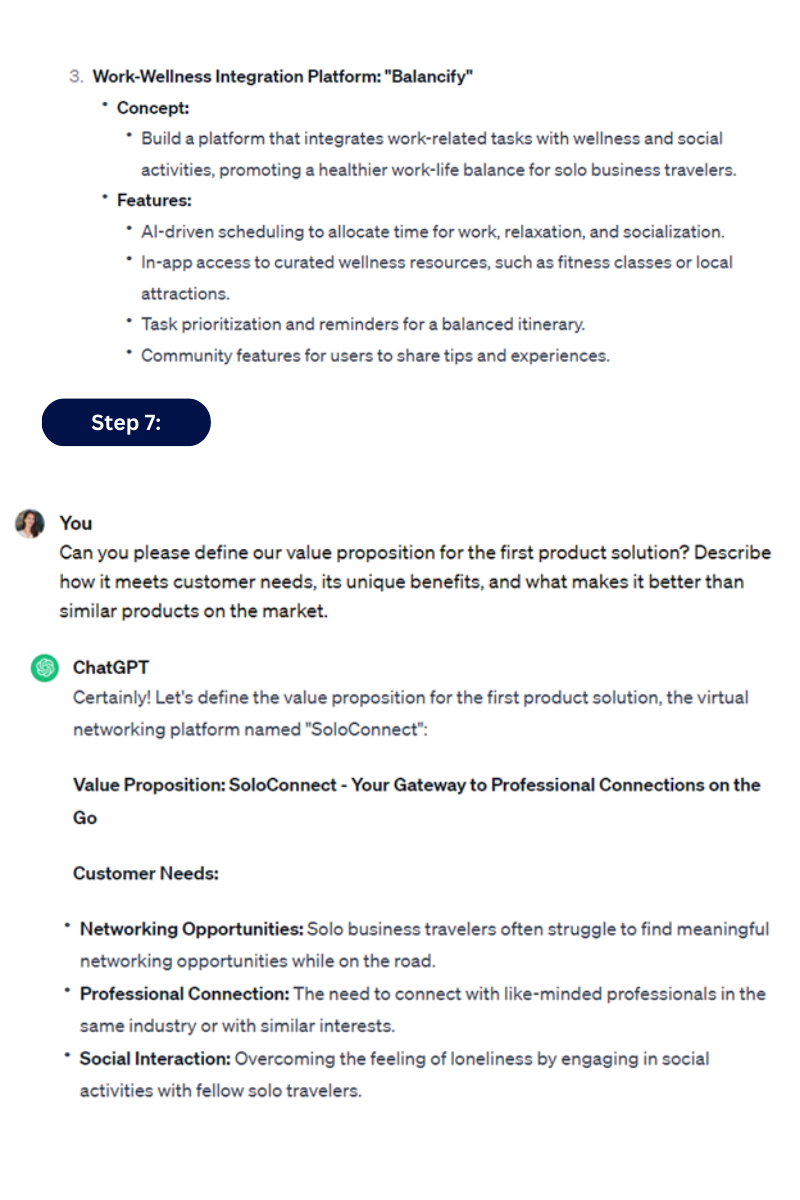
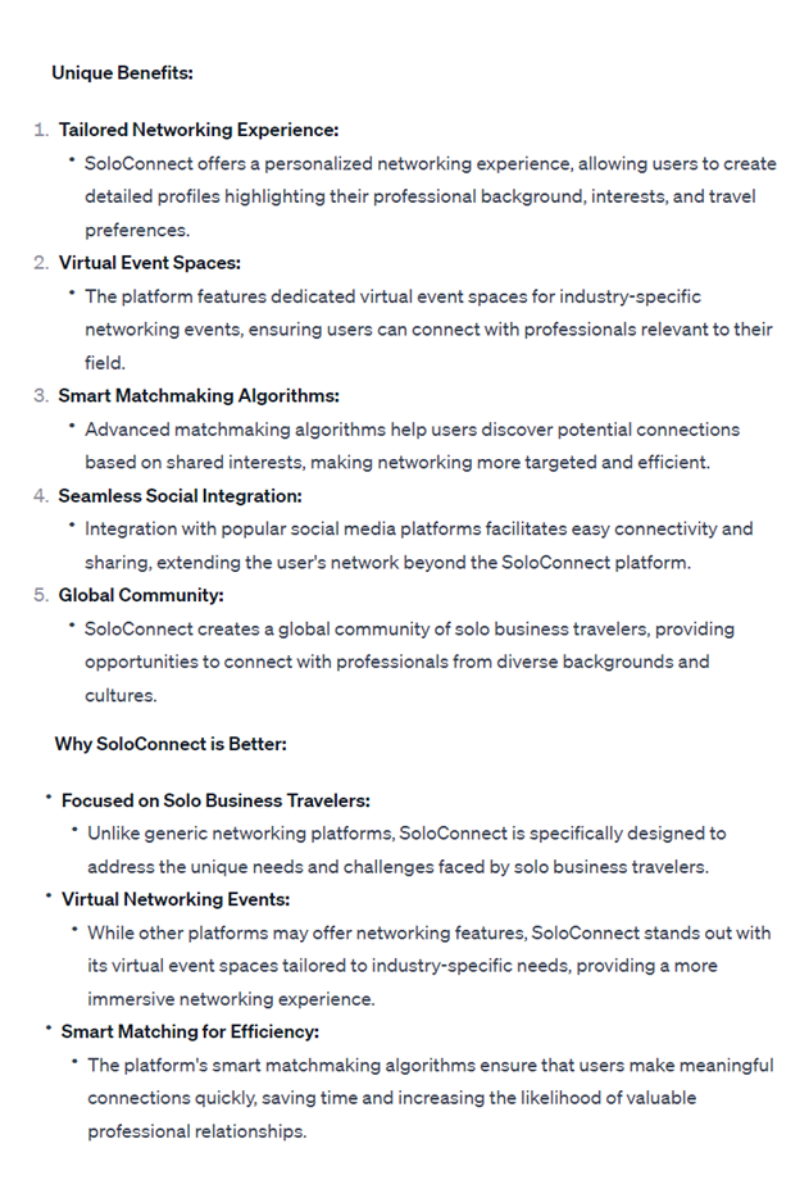
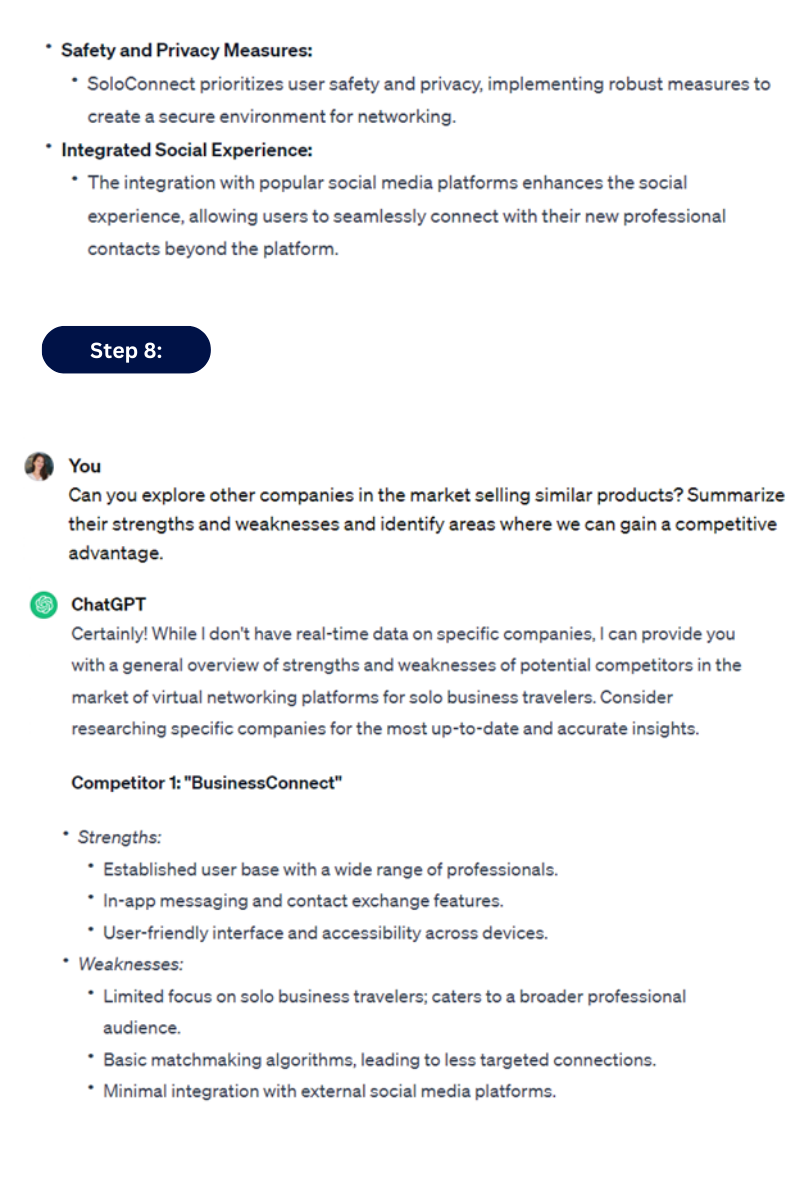

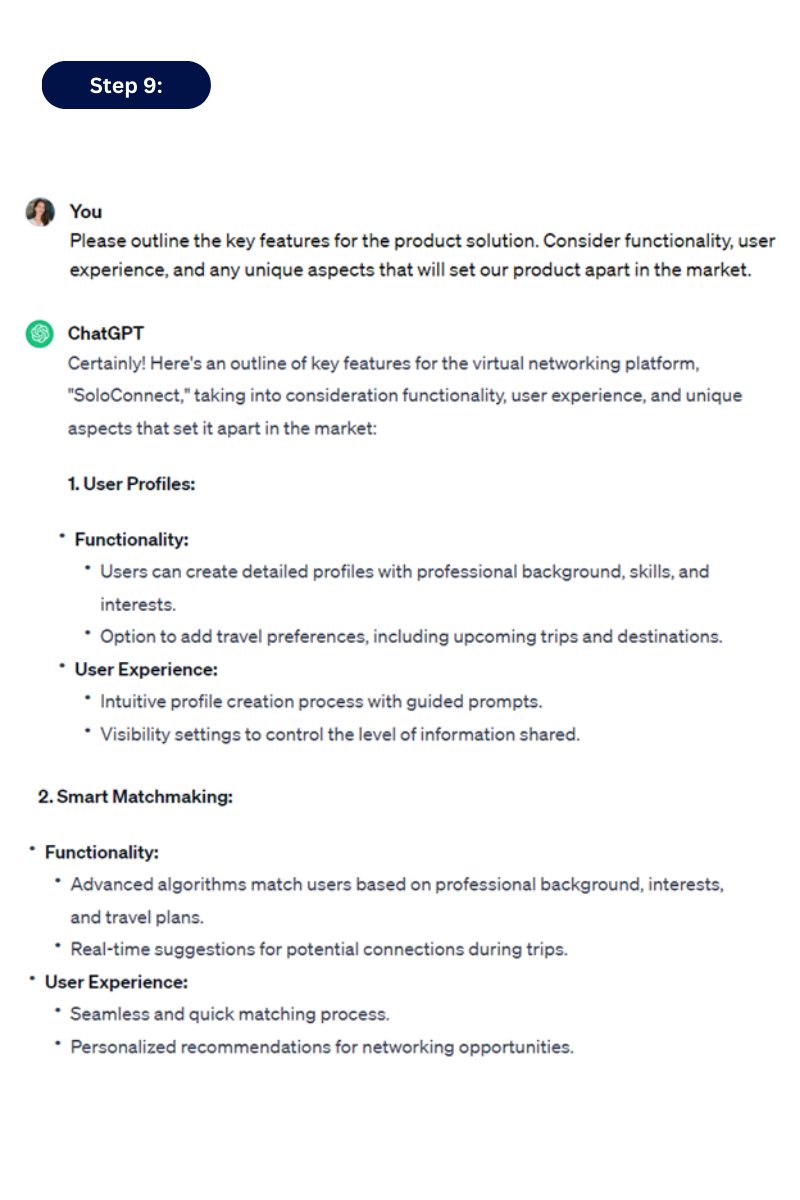
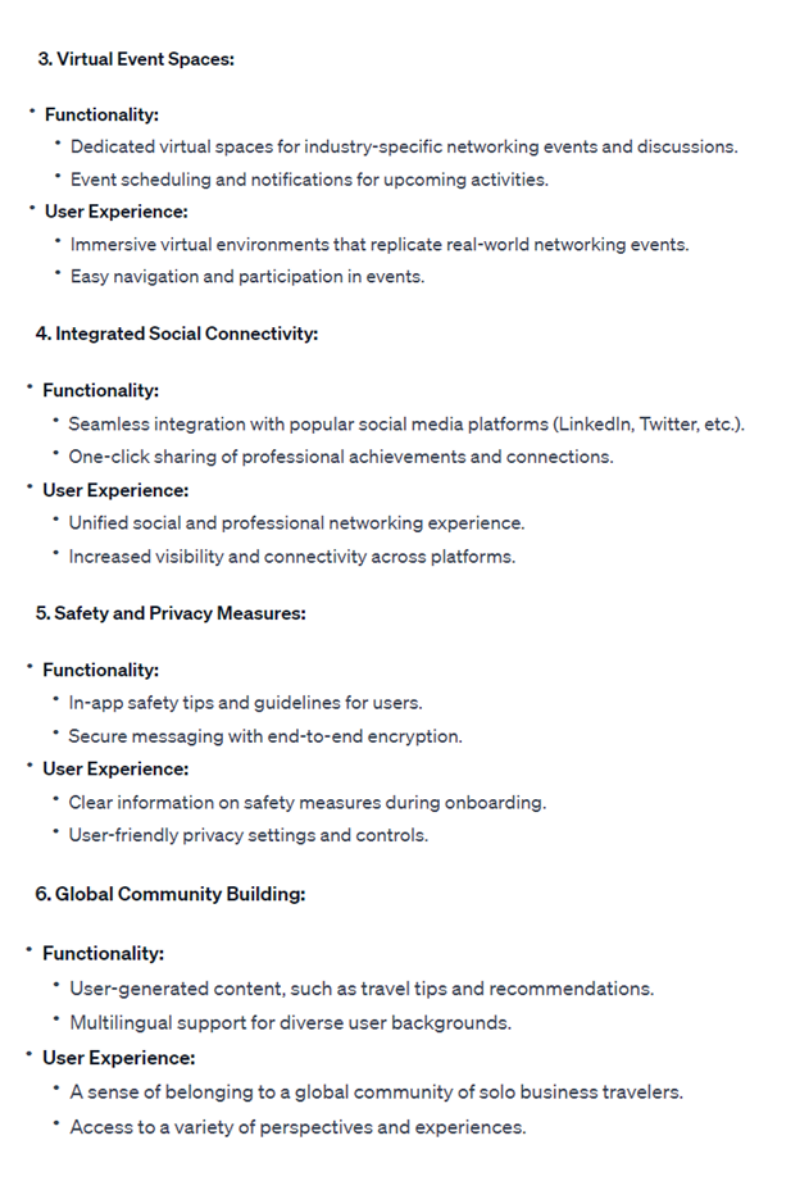
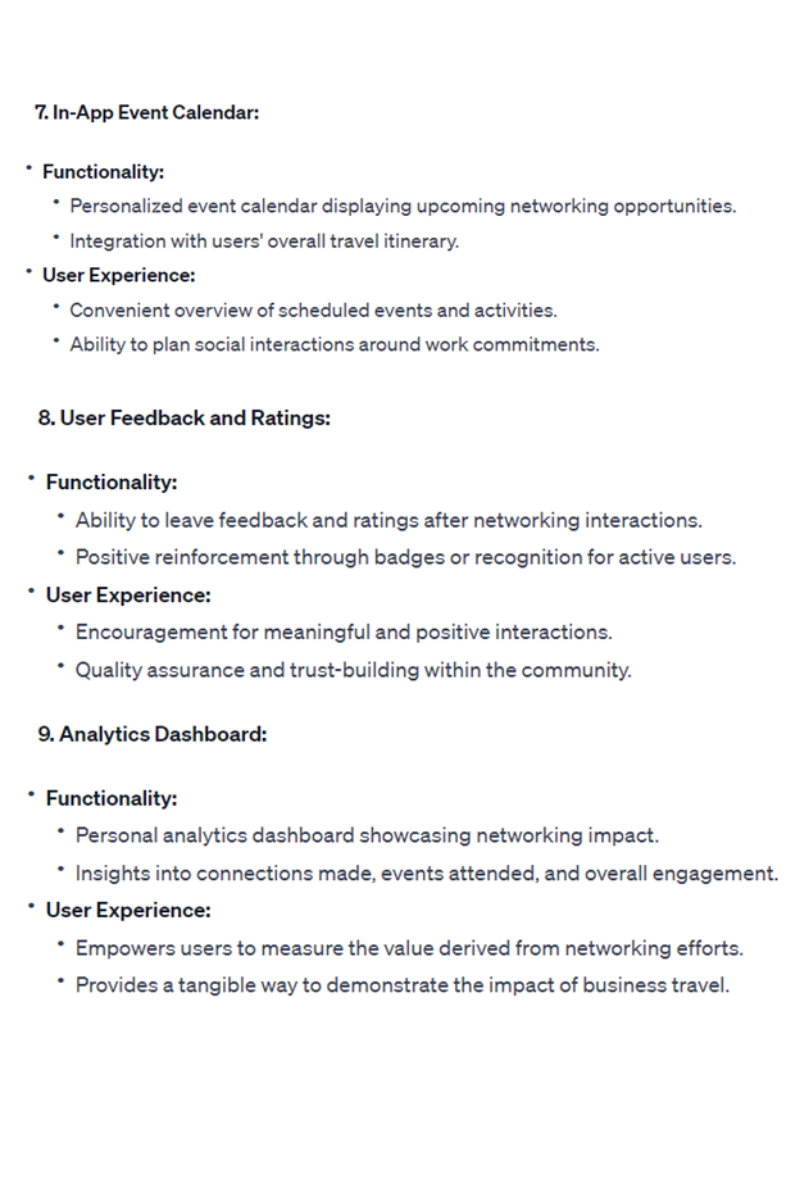
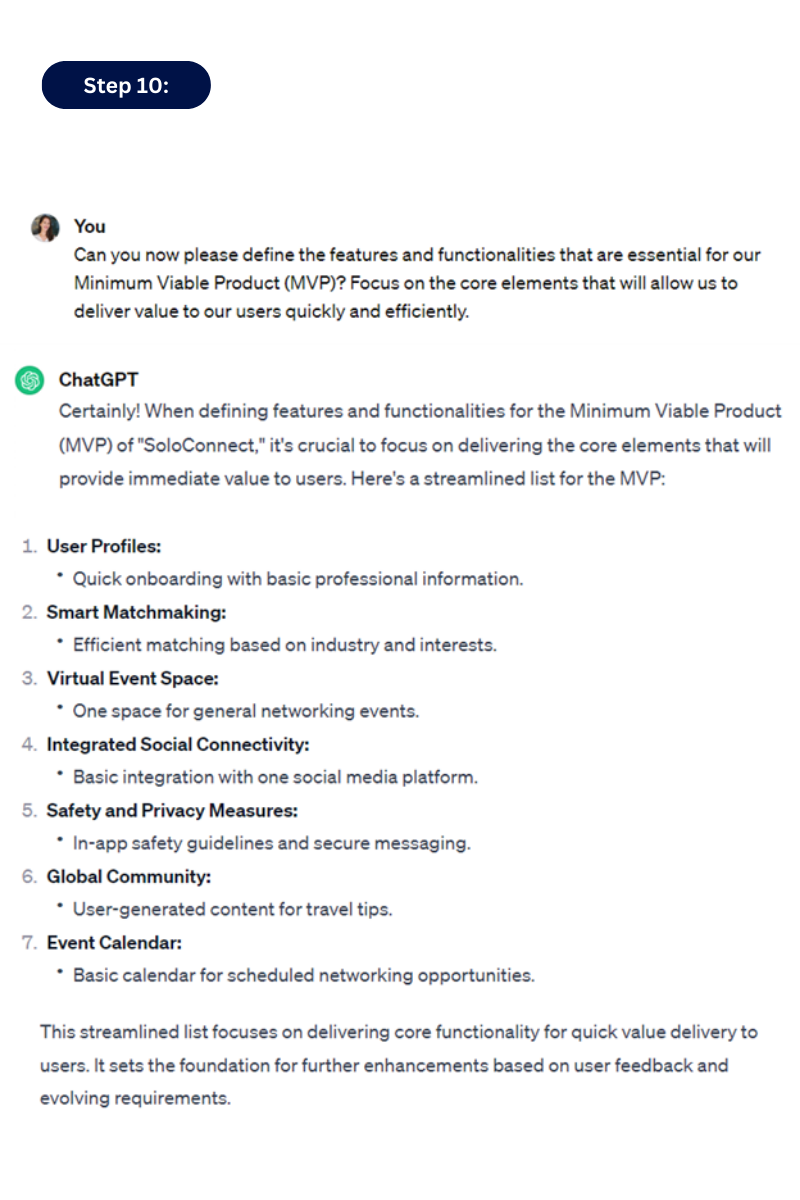
At the end we’ll say that ChatGPT can be a really valuable asset in product discovery, helping us save significant time. However, it’s important to remember that while ChatGPT and AI, in general, can be incredibly helpful, they don’t guarantee the automatic success of our products. Success still relies on thoughtful execution and a comprehensive approach beyond the capabilities of AI alone.
Olgica Strezoska, Principal Product Owner at Damilah
To avoid building products that nobody wants, extensive Product Discovery is essential before embarking on the actual development process.
What is Product Discovery?
Product discovery is a dynamic and iterative process that lays the foundation for successful product development. It is the process that helps product teams understand the real problems and needs that people have and then figure out the best ways to solve them before starting development.
The concept of product discovery originated during the 1990s. During that era, companies allocated substantial portions of their marketing budgets to persuade customers of their product’s necessity. Unfortunately, this led to a lot of very expensive failures, as products often made it to full release before companies realized that people just didn’t need or want them.
The main goal of product discovery is not to ship features but rather to promote a continuous environment of learning that will help improve the product incrementally and consistently.
Product discovery is all about de-risking. As Marty Cagan puts it in his book “Inspired”, the purpose of product discovery is to address these four critical risks:
- Value risk – Will the customer buy this or choose to use it?
- Usability risk – Can the user figure out how to use it?
- Feasibility risk – Can we build it?
- Business viability risk – Does this solution work for our business?
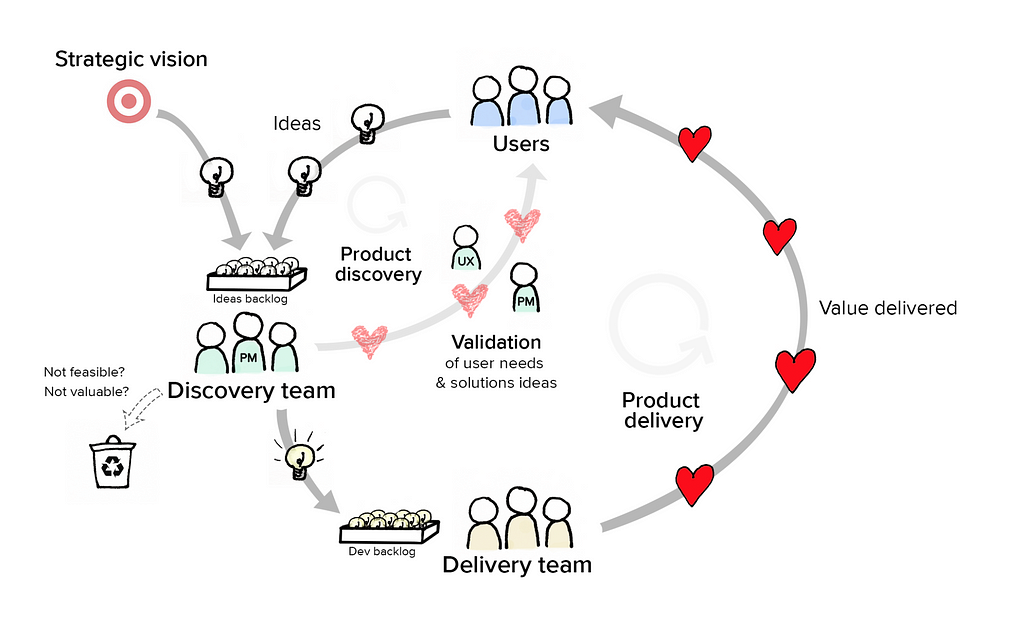
The product Discovery process can be divided into these 4 phases:
1. Understanding Users
The first phase is all about user research and building empathy for our users. We must be able to put ourselves in users’ shoes, and that can be achieved only if we truly get to know them, listen to what they are saying, and learn about their habits, desires, and frustrations.
To achieve this understanding, several steps can be taken:
- Conduct Surveys and User Interviews: Engaging with the target audience through surveys and user interviews provides valuable insights into their preferences, pain points, and aspirations. This step helps in identifying genuine problems that need solving.
- Continuously Ask “Why” (The Five Whys method): By consistently questioning the reasoning behind the product, teams can uncover deeper insights and align their solutions more effectively with user needs.
- Observe users and create empathy maps: By synthesizing and visualizing the data from user research and interviews, empathy maps can help us identify key insights.
2. Defining the Problem
With a better understanding of the users, the next step is to precisely define the problem or need our product intends to solve. That can be done by analyzing the user research data we gathered and finding patterns that emerge from this data (using the Affinity mapping technique). By prioritizing the most important problems for users, the team can decide which user problem they want to focus on and clearly define their hypothesis before jumping into solutions.
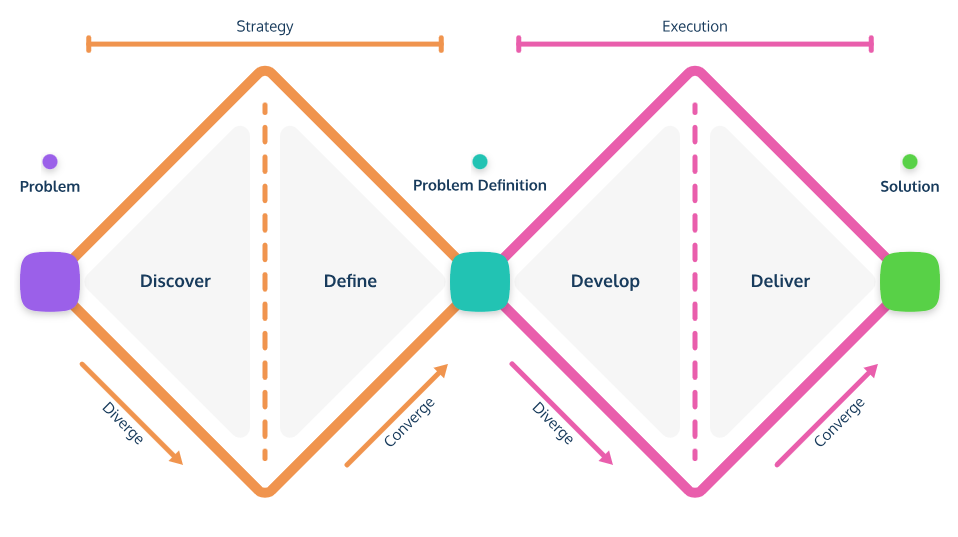
3. Ideating and Prioritizing
Once we know what the user problem is, we should continue to the Ideation phase so that we can slowly come to the solution of the problem. This phase consists of gathering different ideas from the team (using brainstorming, mind mapping, or similar techniques) on how we can respond to the users’ problem or need. At the end of this phase, we have to prioritize the idea for which we are most confident it will bring value to the users so that we can continue prototyping and testing our hypothesis.
4. Prototyping and Validation
The final stage is about building a quick prototype to be tested and validated to gain confidence that the right product is going to be moved into the product delivery process. Prototyping ensures that the product solution aligns with the identified customer need and that users can navigate through the potential solution effectively.
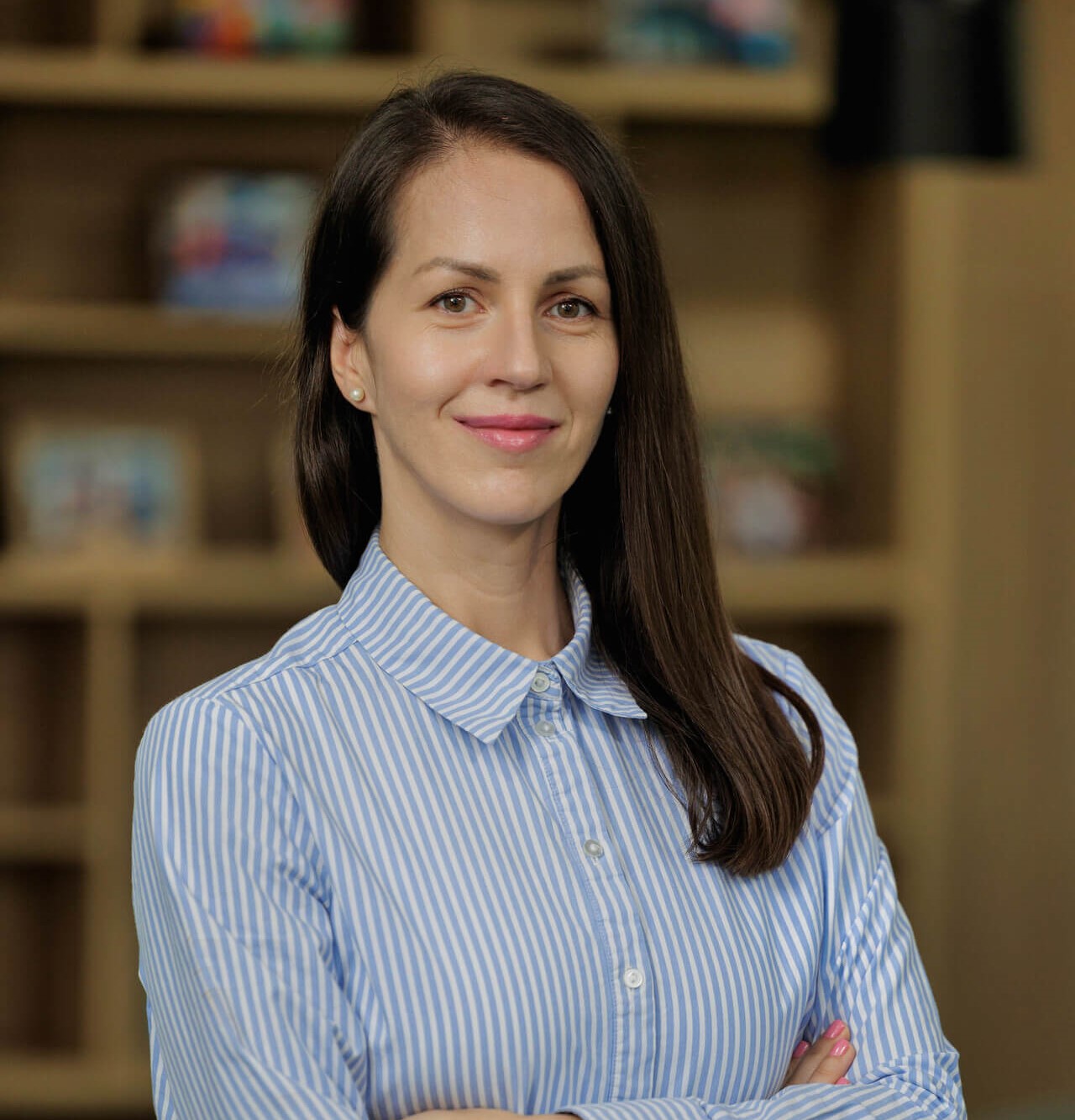
Product discovery is the bedrock of successful product development. It empowers businesses to create innovative solutions that genuinely address user needs and desires. By deeply empathizing with the target audience, conducting thorough research, and actively listening to feedback, companies can build an environment of continuous learning and craft products that resonate deeply with their customers.
Olgica Strezoska, Principal Product Owner at Damilah
Microservices have been a buzzword in tech blogs for almost a decade now. Introduced by James Lewis and Martin Fowler as a logical evolution of Service-Oriented architecture, microservices offer IT organizations the opportunity to stay relevant and evolve their products constantly in an ever-changing software market. While many successful organizations still rely on legacy solutions built using monolithic architectures, the advantages offered by microservices far surpass the associated risks.
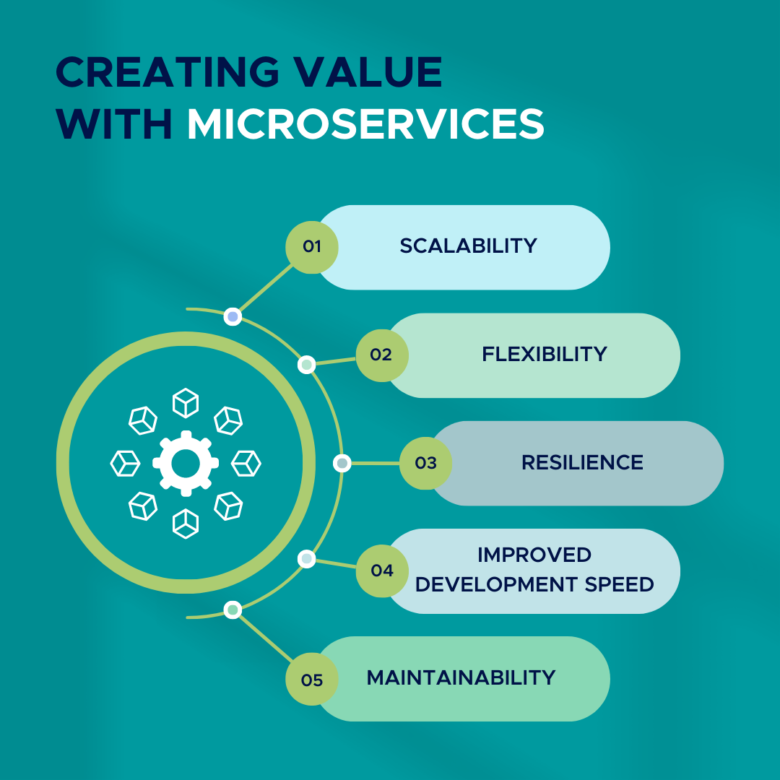
Moving to microservices can bring many positive changes to IT organizations. Microservices allow scalability, flexibility, resilience, improved development speed, and maintainability. These benefits give IT organizations an edge over their competition, making it essential to consider a move towards microservices:
Scalability: Microservices can be scaled independently, allowing organizations to handle changes in demand without having to scale the entire application.
Flexibility: With microservices, organizations can make changes to individual services without impacting the entire application. This enables faster iteration and deployment.
Resilience: If one service fails, it does not affect the entire application. Other services can continue to function, providing better availability and resiliency.
Improved development speed: With smaller, independent services, development teams can work on separate services concurrently, increasing the development speed and reducing time-to-market.
Maintainability: As services are separated and decoupled, it is easier to maintain and update them. This reduces the risk of introducing bugs or errors when making changes.
However, migrating from legacy monolithic solution to microservices is not an easy task. Failed attempts to migrate or to do microservices right on a green field solution can put many IT organizations at risk of losing their market advantage. Careful planning and analysis are required to avoid costly mistakes.
The migration process requires a thorough analysis of the existing monolithic solution, including identifying the different components of the platform, their dependencies, and data flows. Migration impact on existing workflows and business processes should also be considered. The outcome of this analysis will fit into the strategic plan for migration, including breaking down the monolith into smaller services and determining appropriate boundaries between them.
To minimize disruption to the existing platform, a phased migration approach is recommended. This involves migrating one component at a time, starting with the least critical components and gradually moving towards the more critical ones. Ensuring quality along the way by setting the right testing practices is also important.
The execution of the strategic plan may impact the organization’s structure as well, making it essential to have the right people in the right place. Experienced consultants can make a real difference between success and failure in this process. At Damilah we have the experteese in the process of migrating from monolithic solutions to cloud-native SAAS solutions using microservices architectures.
In conclusion, while microservices are not the silver bullet, they offer numerous benefits that can make a significant impact on an organization’s success. Careful planning and execution with the help of experienced consultants can help organizations migrate from legacy monolithic solutions to microservices architectures with minimal disruption and maximum success.
Typically, the process involves reviewing the company’s technology and technical infrastructure, including architecture, scalability, security, performance and reliability of products and services. Also understanding the people and their approach to software engineering, processes used and how closely they are engaged with their customers.
All software products, even new ones, tend to have technical debt, which may vary from areas of the code which may need refactoring to support scalability/performance future requirements to utilizing out of date or even obsolete versions of third party products. It is important that engineering teams have an understanding of their technical debt and a plan to manage it.

Modern software product teams tend to invest in devops and automation of both their delivery pipelines as well the testing of software. This is sometimes difficult and expensive to reverse engineer into long established “old tech” products, but is likely to be important to resolve if these products are expected to change significantly as part of the investment thesis.
It is also really important to review any major work-in-progress projects, especially where technology which is new or unfamiliar to the engineering team is being used, for example where public cloud is involved. Public cloud offers many opportunities to introduce time and money saving infrastructure as a service, but used in the wrong way may in fact incur significant additional costs. Understanding best use of cloud and the opportunities presented may be important to support value creation opportunities.
One of the biggest challenges I hear about when talking to investors occurs when they receive the Tech DD report from one of the third parties who have productised the process. Lots of analysis and data is presented outlining all the various potential areas of concern in a neatly structured form.
The question is then “So what?”. As a CTO what would concern you? I have been involved in many Tech DD activities as a CTO, either whilst performing that role on a full time basis, or as an independent consultant asked to advise an investor. Being able to see the wood for the trees and raise red flags is an important part of the role, as well as looking for opportunities to improve productivity and customer engagement.
Assimilating all the data and turning into a workable plan can be quite a task depending upon the size of the organisation. Sometimes the selling business is deliberately obfuscating with information, which itself tells a story or denies access to key technical people so as not to unsettle them.
At Damilah, we have extensive experience conducting technical due diligence activities, particularly for product software companies. As product experts ourselves, we understand how to build a great product and the day-to-day challenges which may occur.

We have deep technical expertise of legacy applications as well as modern cloud SaaS products and understand the needs of investors wishing to create value and scale businesses they acquire and what the barriers to these may be.
We also have teams of highly talented software engineers able to tackle the most complex transformations from monolithic to micro-services, or from on-premise to cloud native SaaS solutions, working closely with existing client teams. We adopt a modern agile way of working , to deliver maximum value to the customer in the shortest possible time, with full visibility for all stakeholders.
In particular we have extensive experience of working with Private Equity houses and their portfolio companies, understanding well the need for value creation to support the investment thesis, having worked ourselves in these environments.
To discuss further, please contact iain.bishop@damilah.co.uk.
Iain Bishop, CEO and Founder at Damilah
Our Principal Product Owners, Iskra Ristovska and Olgica Strezoska, took the stage as speakers, captivating the audience with their insights on “How to build better products by improving your product discovery.”
With utmost confidence and passion, they delved into effective tools and practices that empower individuals to enhance their product discovery process. Their presentation not only emphasized the significance of product discovery but also showcased practical ways to improve it, ensuring the development of products that cater to the needs and aspirations of customers.

Iskra and Olgica’s engaging presentation sets a remarkable example for aspiring women in the tech industry, igniting inspiration and encouraging them to fearlessly pursue their passions, embrace professional growth opportunities, and make their mark in the field.
At Damilah, we are fully committed to fostering an inclusive work environment that ensures equal opportunities for all. Through initiatives such as our Graduate Program, targeted skill development programs, and platforms that showcase the expertise of women, we empower women to excel in their careers and emerge as leaders in the industry.

By creating opportunities, providing steadfast support for growth, and amplifying the voices of women, Damilah paves the way for a future in the tech sector that is both inclusive and innovation driven.
When we set foot on the sandy beaches of Greece, little did we know that we were about to embark on an extraordinary team building adventure. The anticipation in the air was palpable as we gathered, ready to dive into a series of thrilling activities that would not only challenge us but also create lasting bonds and unforgettable memories.
As we soaked up the breathtaking beauty of Greece, we quickly realized that this enchanting destination was the perfect backdrop for our journey towards unity and shared experiences. From the very beginning, laughter and camaraderie filled the air, setting the tone for an exhilarating adventure that would forever transform our team dynamic.
Our adventure kicked off with an epic White Ancient Greece Party, where we embraced the spirit of this historically rich land. Bedecked in flowing white attire and adorned with dazzling gold crowns, we felt like mythical gods and goddesses. The evening unfolded with mythology-inspired setting and lively conversations that transported us back in time. We reveled in the joy of uninhibited laughter and carefree dancing, strengthening our bonds and embracing the transformative power of togetherness.
During the day, we engaged in a variety of beach games that brought out our competitive spirit while promoting teamwork and collaboration. We embraced the crystal-clear waters of Greece through exhilarating watersports.
We also encountered thrilling challenges that tested our wit and problem-solving abilities. In the “Fill the Tank” challenge, we raced against the clock, using cups and water to fill a container, requiring us to strategize and think on our feet. The hula hoop race added a dose of hilarity as we competed to navigate the course with grace and agility, inspiring bouts of laughter that echoed along the shoreline.
One of the most intriguing moments was the logic game that pushed our creative boundaries. Together, we embarked on the task of building a waterproof cartoon boat. Ideas flowed freely as we pooled our creativity and problem-solving skills, ultimately constructing a vessel that defied the odds. The sense of accomplishment and teamwork was palpable as our boat sailed triumphantly, a symbol of our collective ingenuity and collaboration.
But the fun didn’t stop there. The Glowstick Beach Party took us on a vibrant journey under the starry Greek night sky. Adorned with glowing bracelets and necklaces, we danced, laughed, and let our free spirit soar. The pulsating music and the shimmering glowsticks created an electric atmosphere, further deepening our connections and fostering a sense of unity that transcended language and cultural barriers.
The impact of our team building adventure extended far beyond the shores of Greece. It fostered trust, understanding, and a renewed sense of camaraderie among team members. Our collective spirits were rejuvenated, infusing our team with a positive and dynamic energy that continues to enhance our productivity and collaboration long after we returned home.
In conclusion, our team building experience in Greece was more than just a trip; it was a transformative journey of self-discovery and collective inspiration.
Till our next team building escapade, onwards we go!
Guests at the opening were representatives of the diplomatic corps, the national and international business community, as well as representatives of the education sector. The modern offices, which are located in the “Manhattan” centre in Kapistec, offer employees a space for greater collaboration, communication, learning and a friendly atmosphere in the moments spent working together.
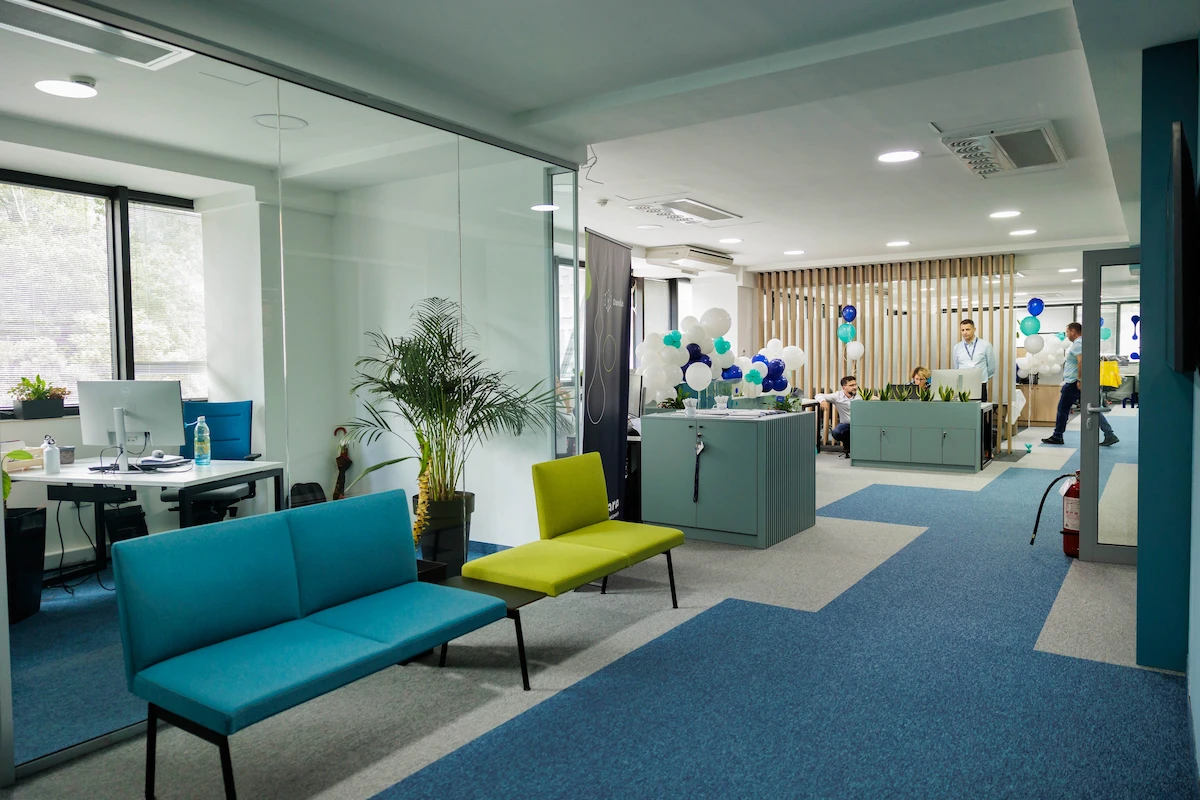
In September Damilah had the official opening of its new modern offices in Skopje, in the presence of a large number of prominent guests. The offices, which cover almost 700 m2, are located in the ‘Manhattan’ business centre in the Kapistec neighbourhood. Guests at the grand opening were representatives of the Embassy of the United Kingdom, highest representatives ‘Damilah’ British business partners, ‘Parent Pay’ and ‘ESS’, employees, as well as many other friends of the company.
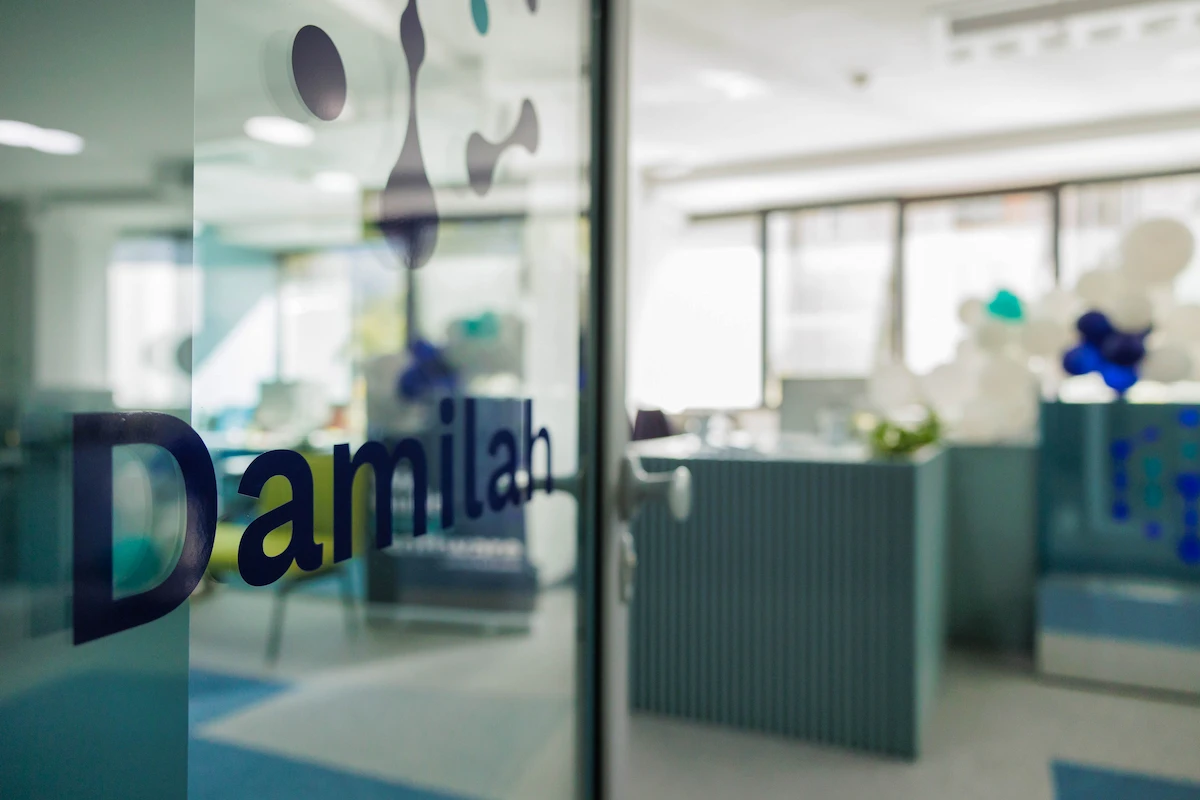
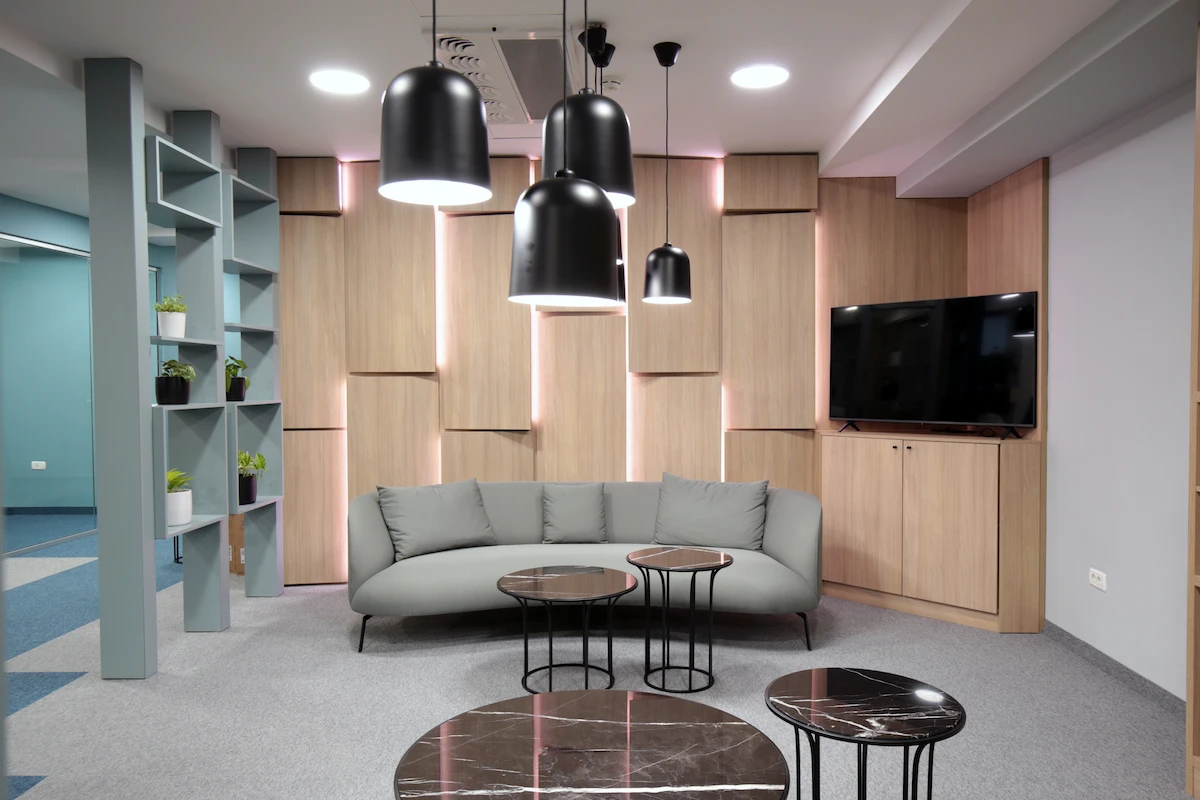
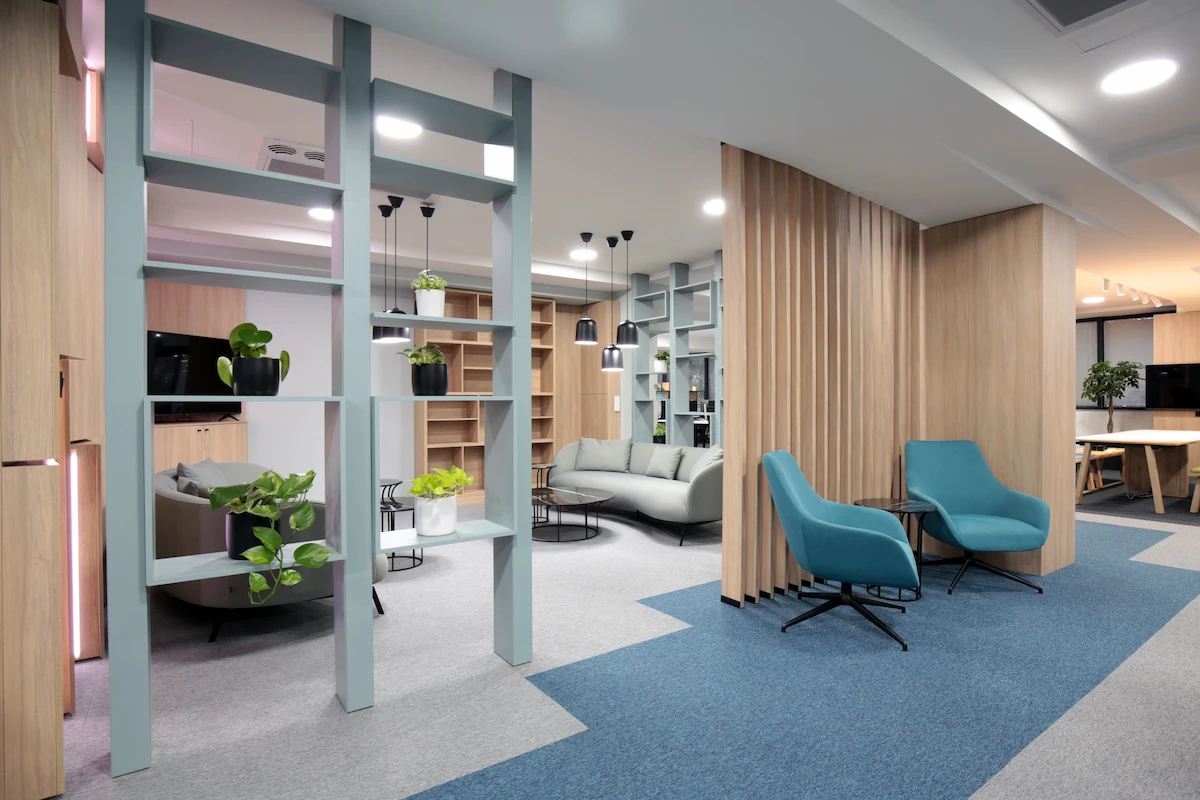
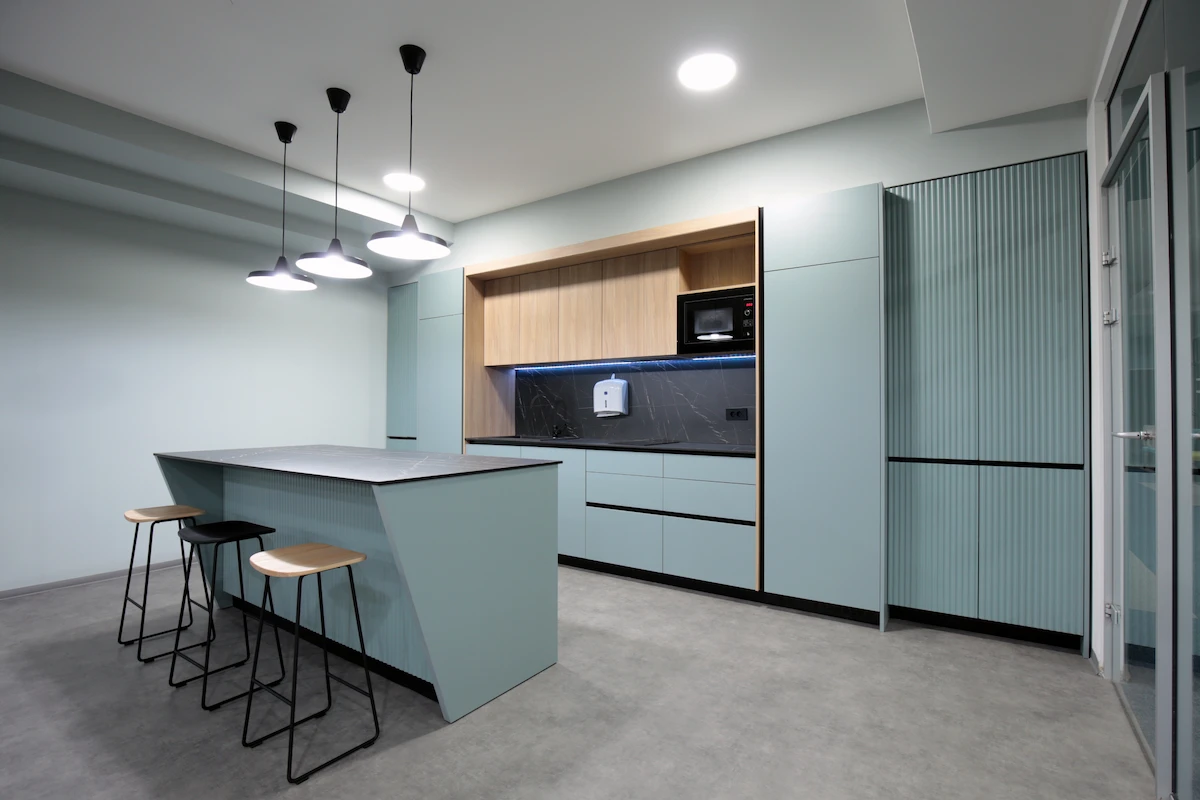
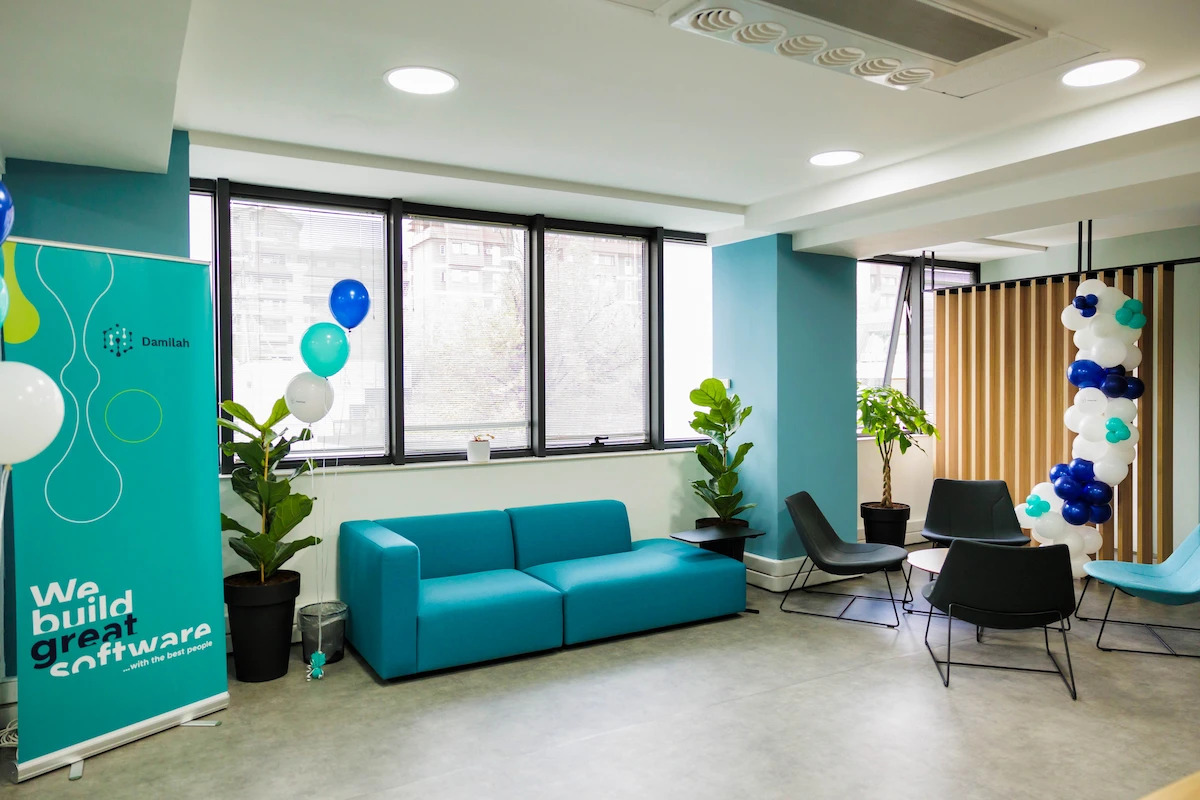
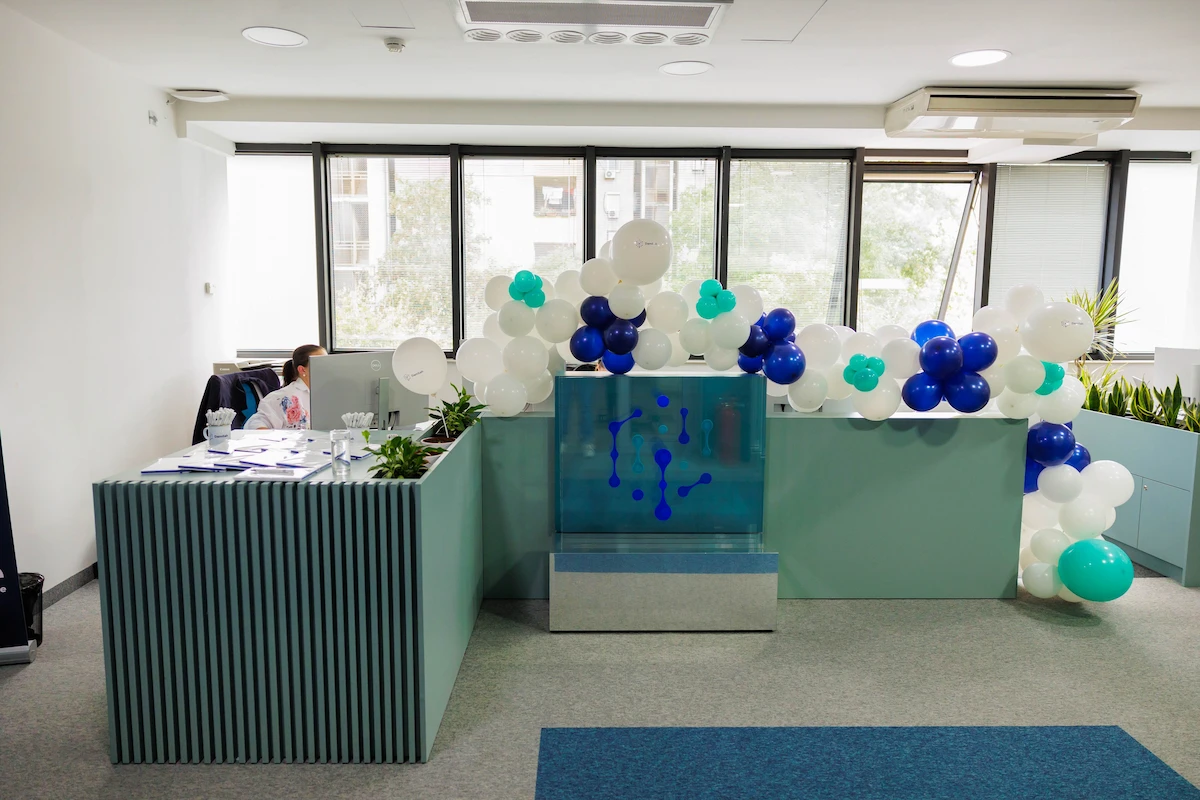
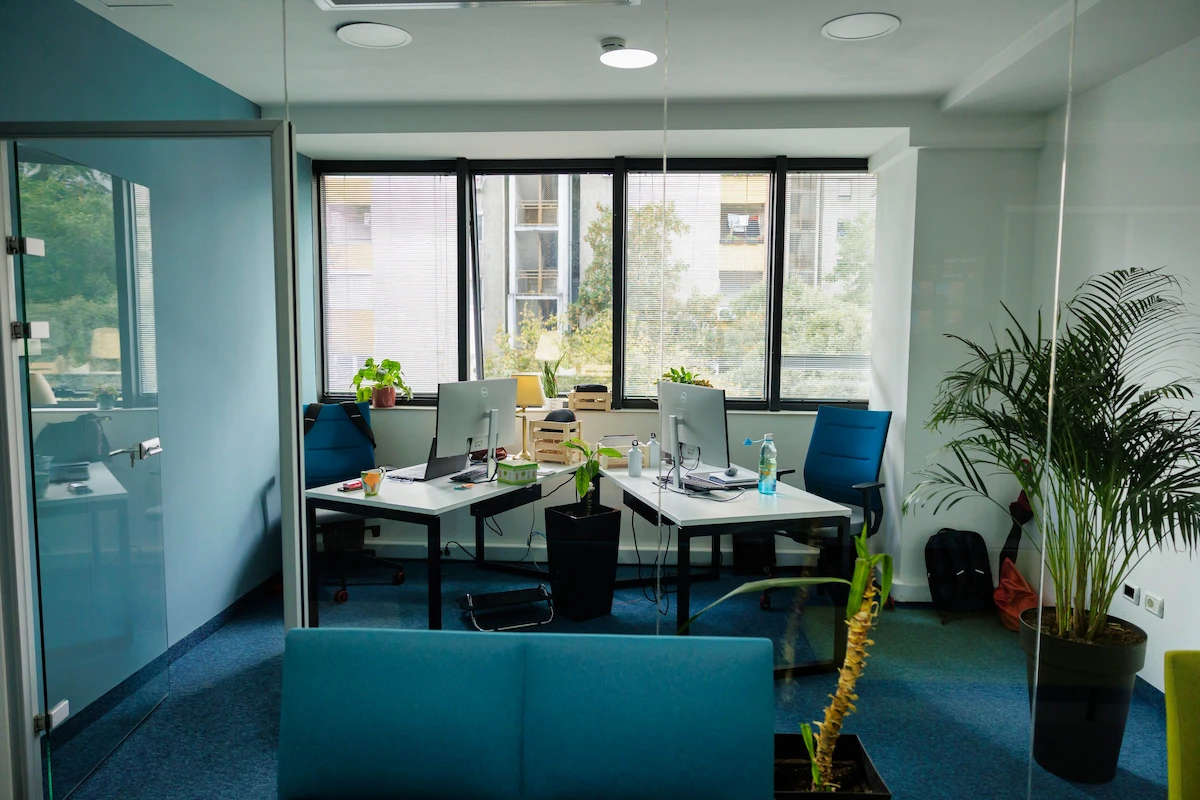
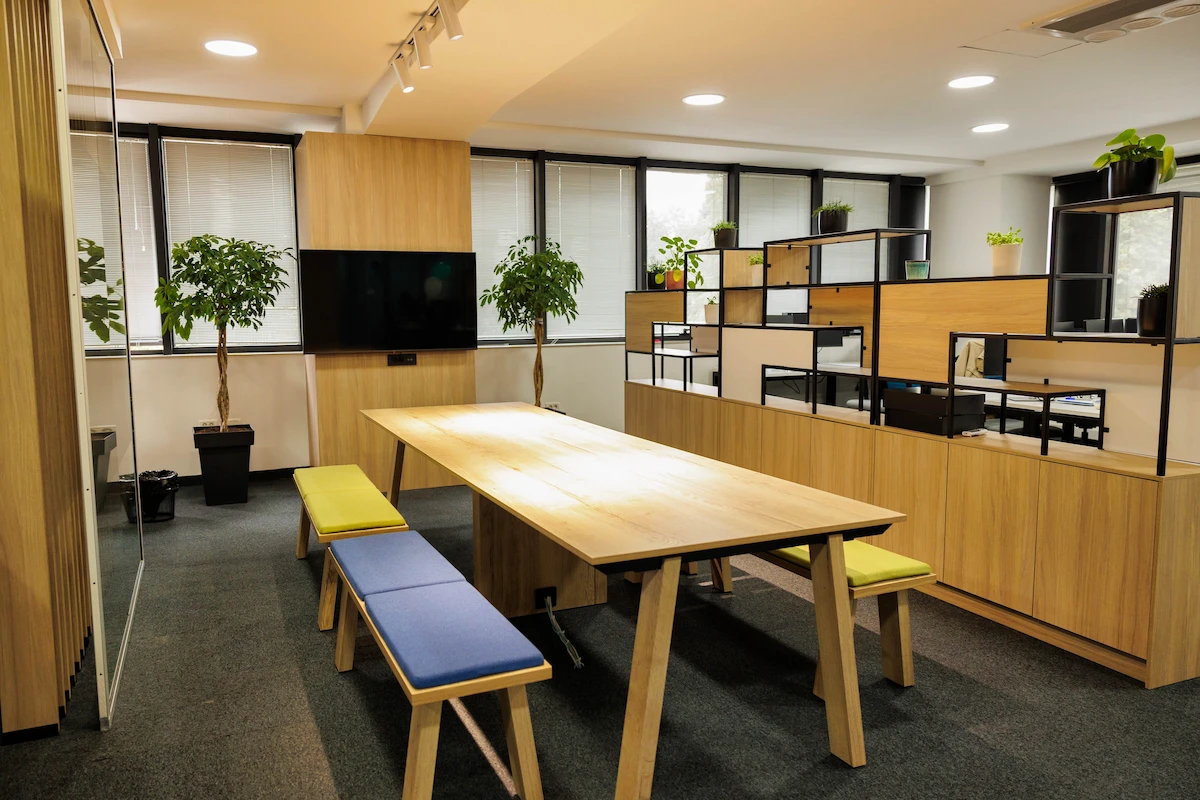
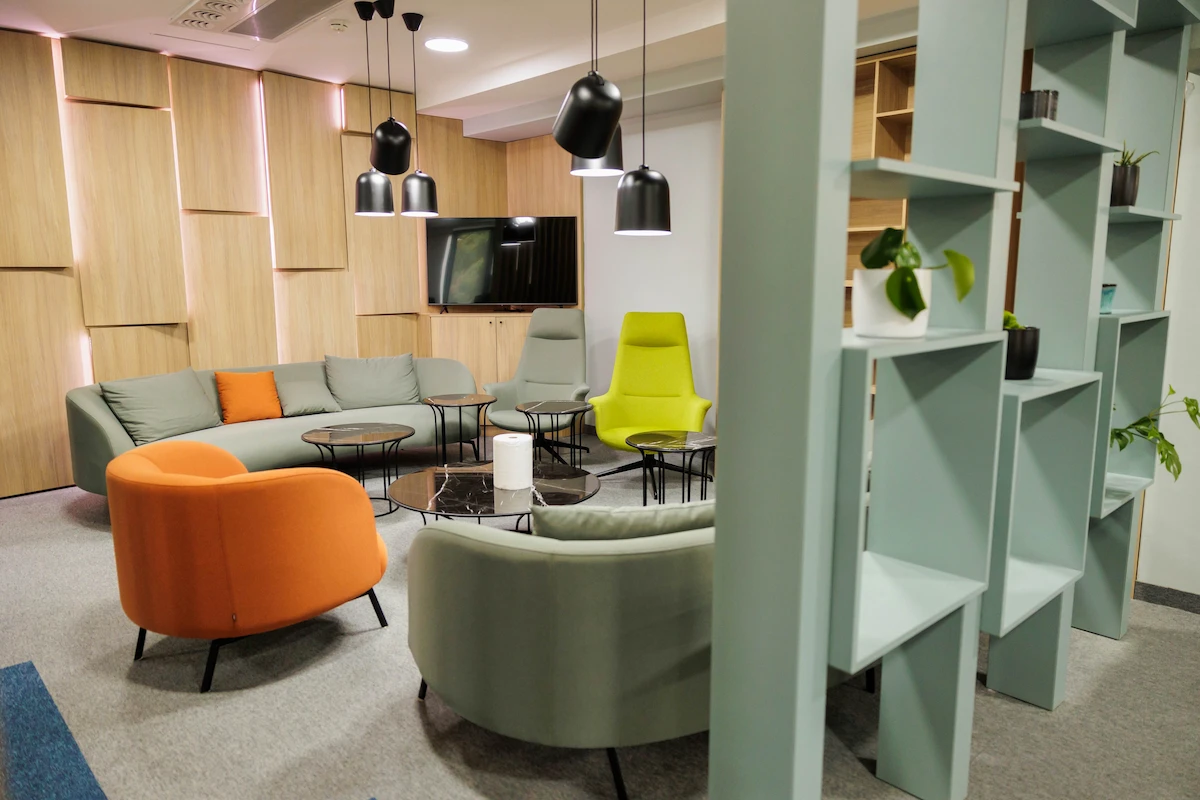
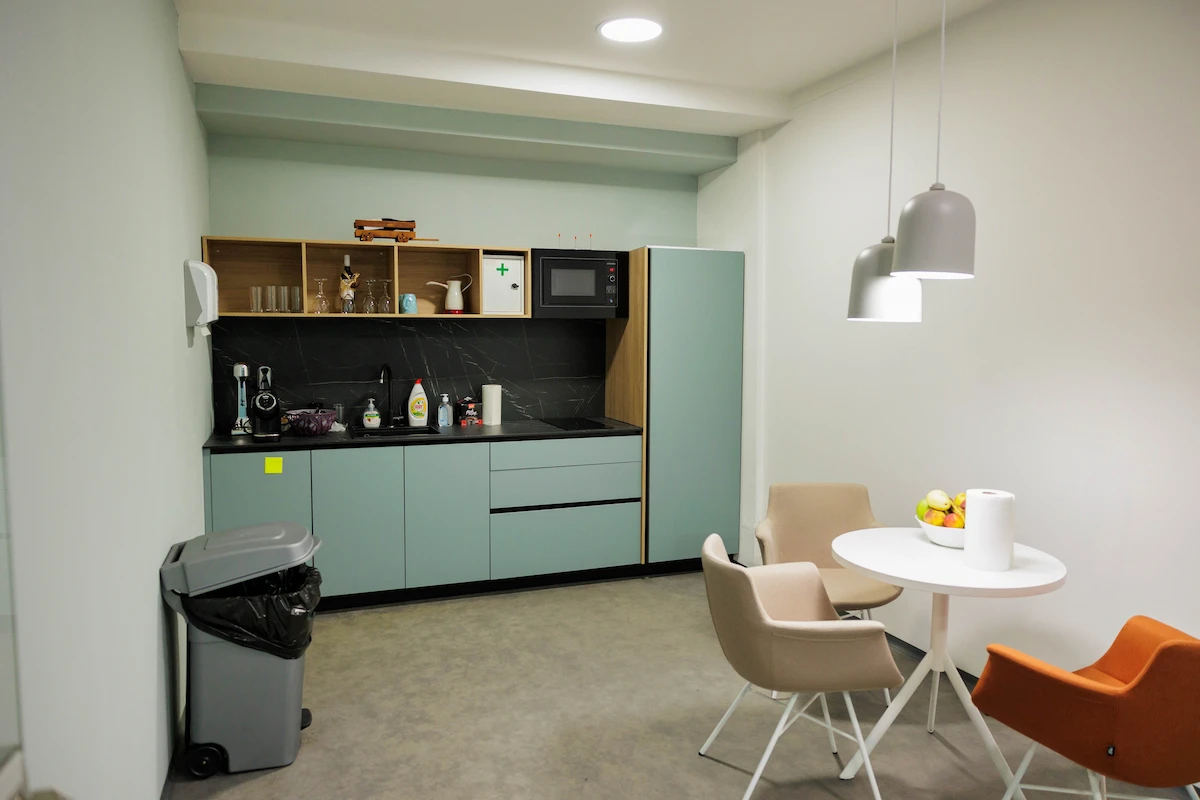
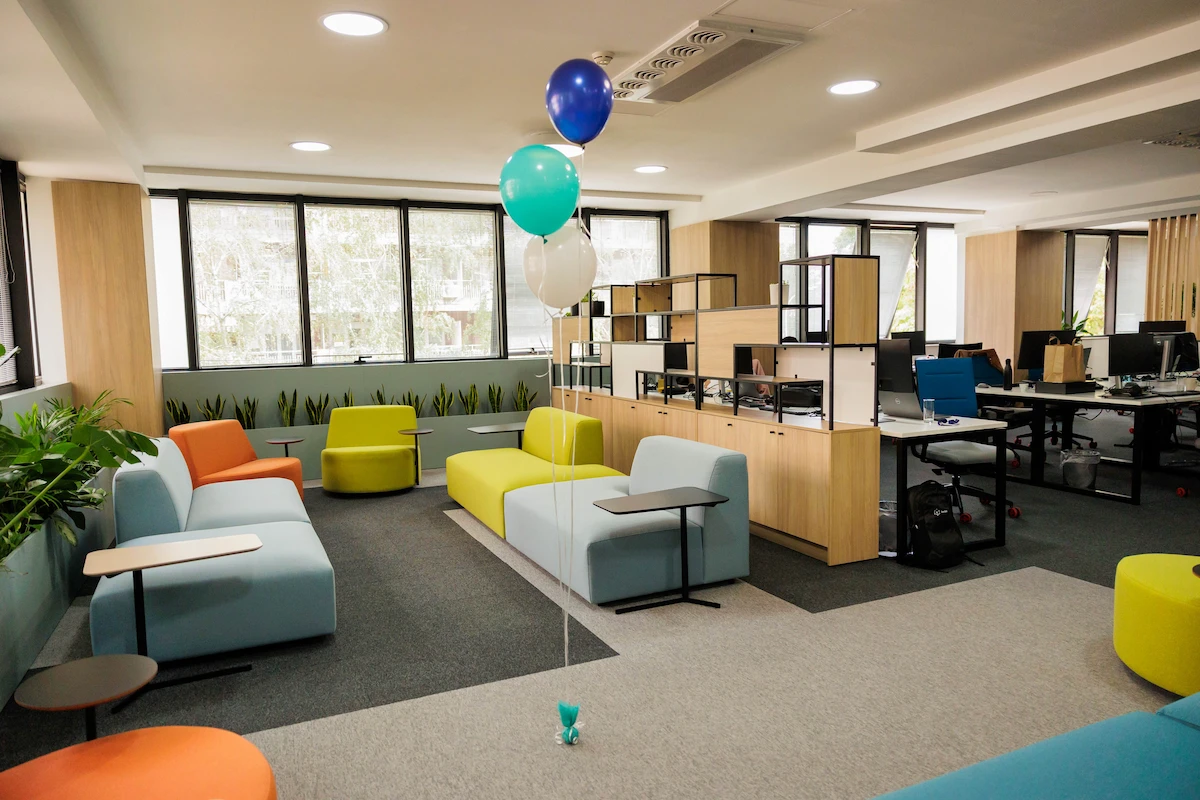
– From the very beginning, we wanted to create a modern environment where every employee would feel comfortable, inspired and motivated to work. We wanted to create a space where employees would enjoy spending their time and can collaborate easily with their colleagues in a variety of settings. It is a space that will encourage creativity, learning and productivity. These are among the main reasons why we chose this designer concept, this open concept, in which the seating arrangement is flexible giving people the choice of where and how they want to work. It is a space that makes people more visible and connected.
said Iain Bishop,
founder and CEO of the company.
‘Damilah’ is growing rapidly, with about 50 IT professionals already working in the company and plans for further significant growth. The company was founded last year by Iain Bishop, and has been active for seven months. ‘Damilah’ has been recruited by Europe’s largest ed-tech company to develop and refine its product, an educational platform used by more than 19,000 schools in the UK and 48 other countries.
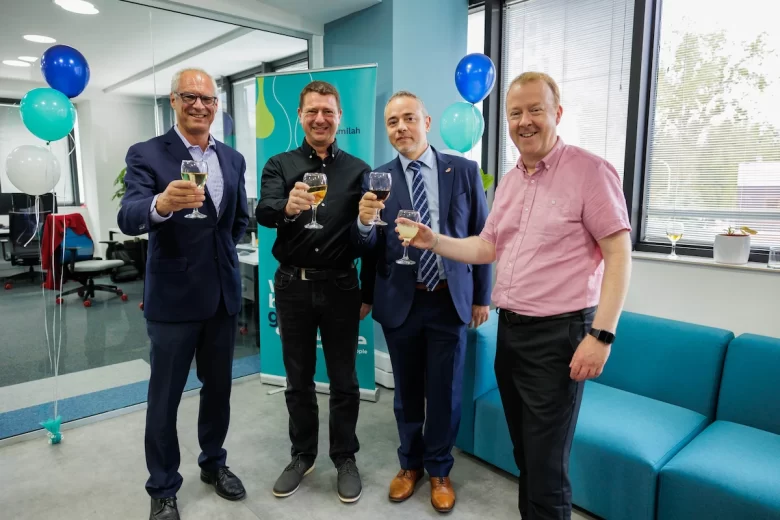
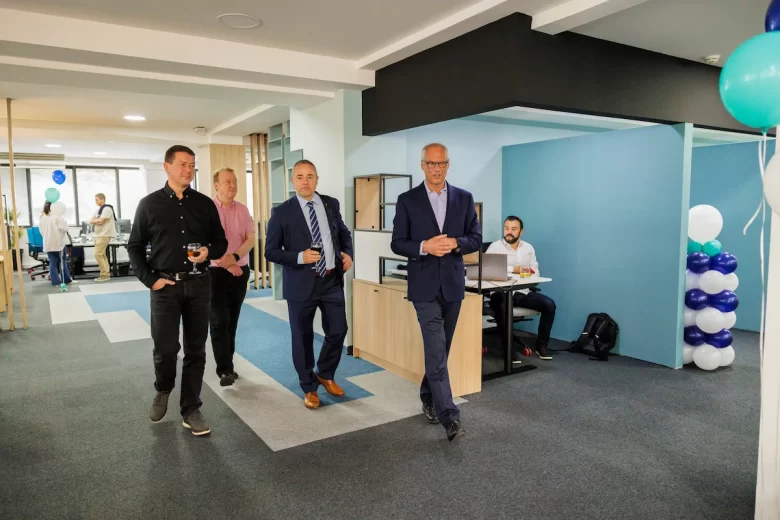
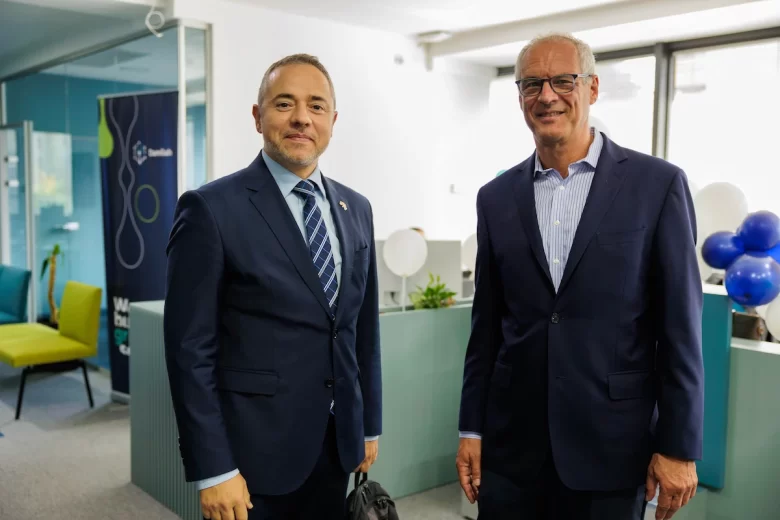
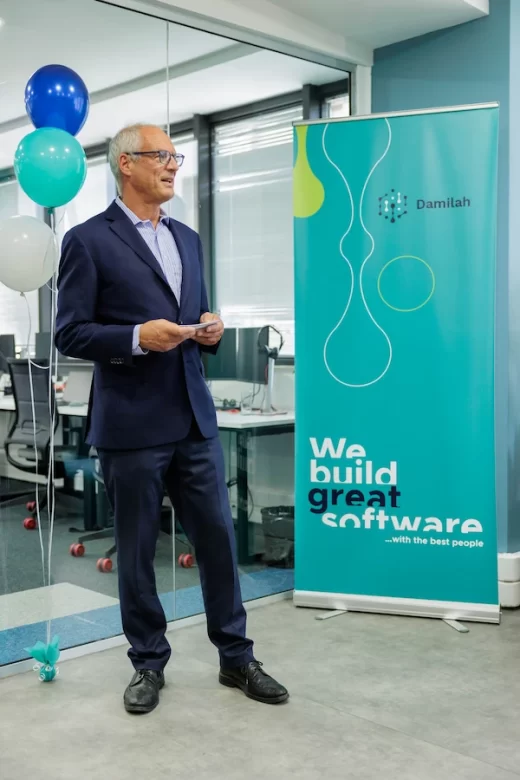
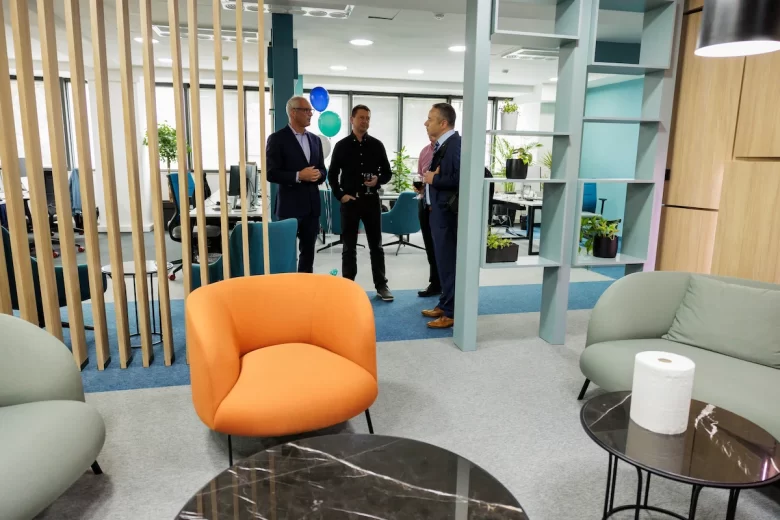
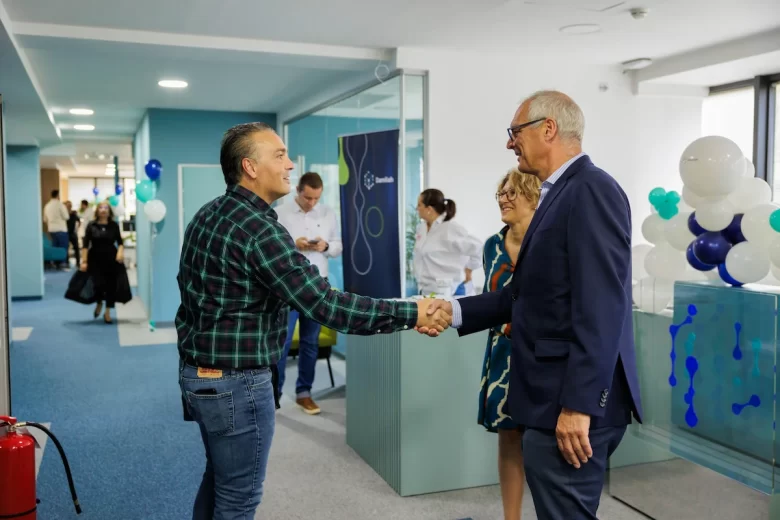

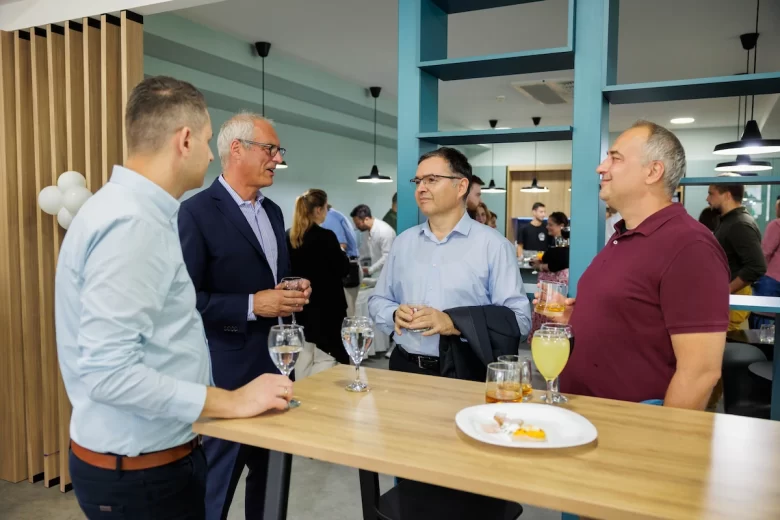
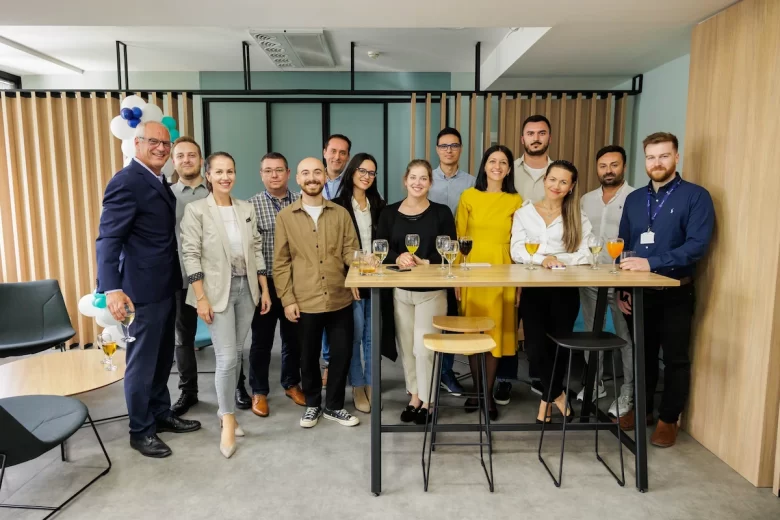
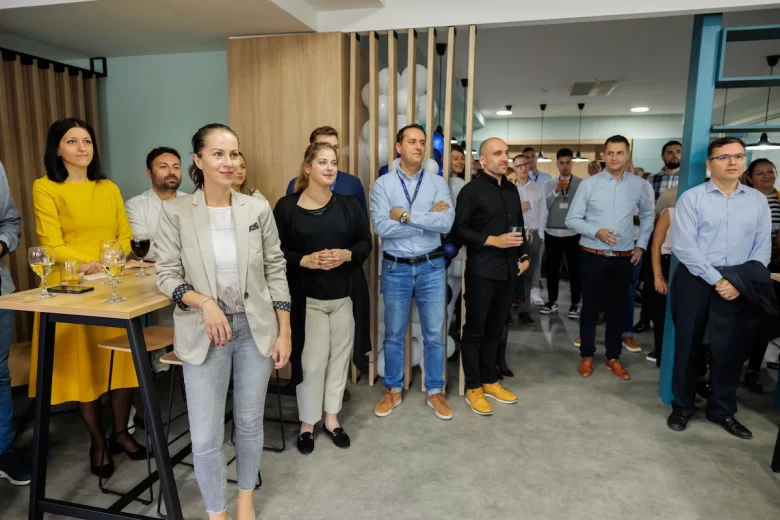

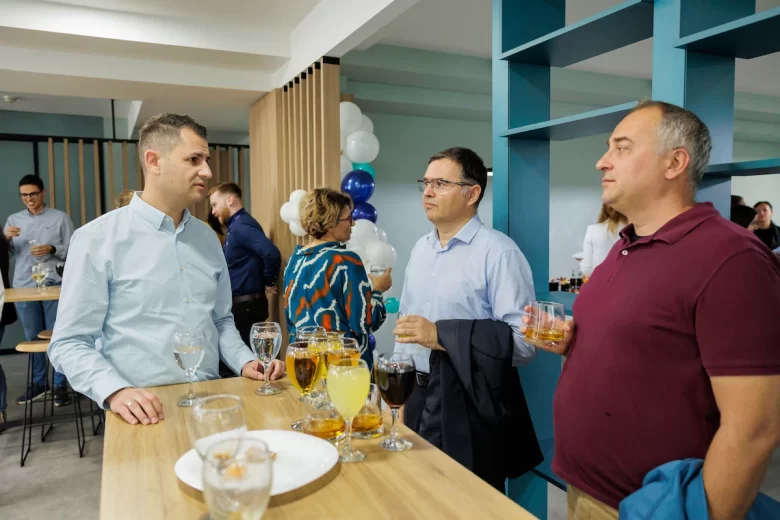

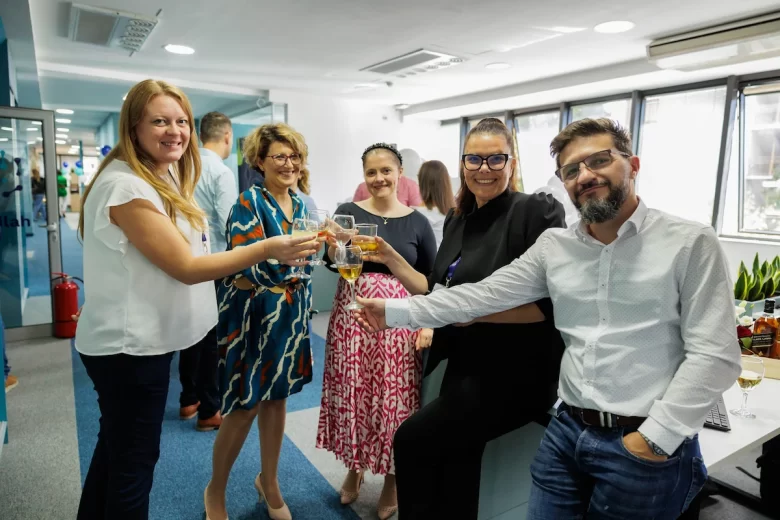
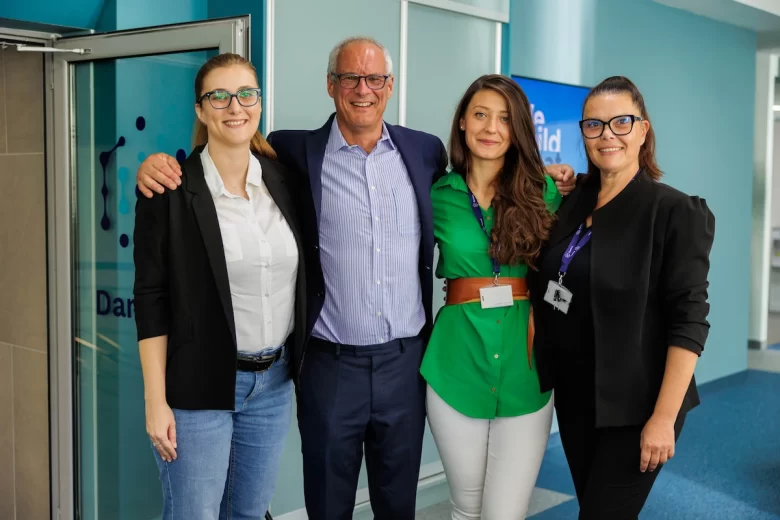

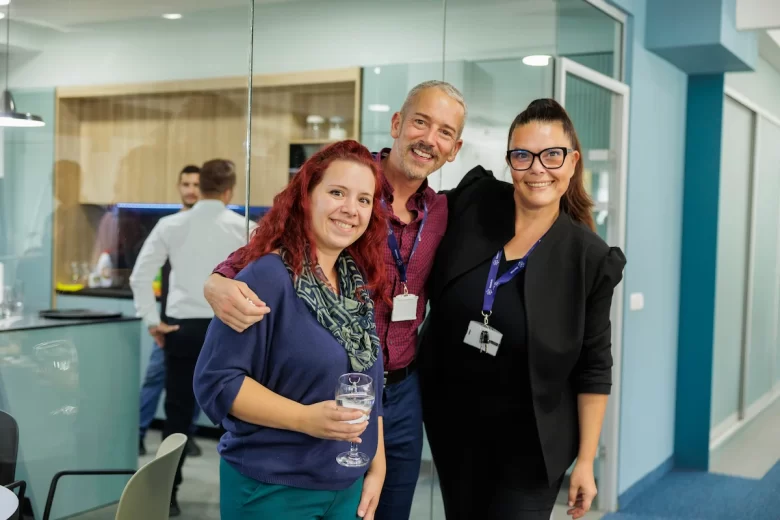

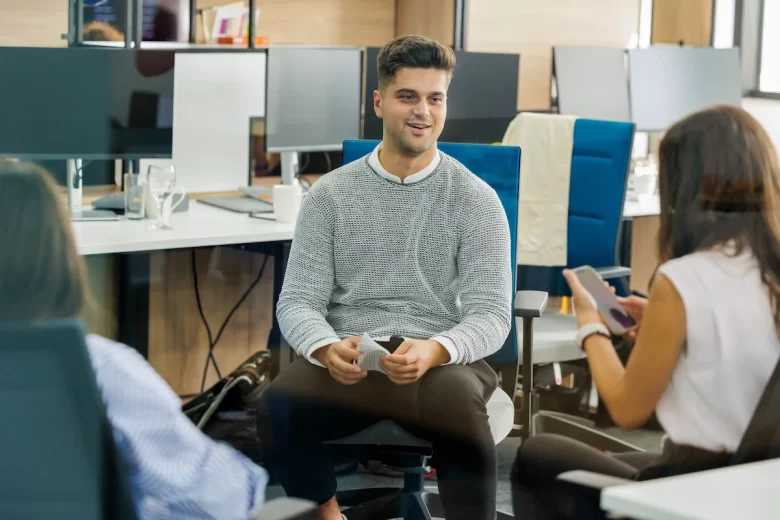
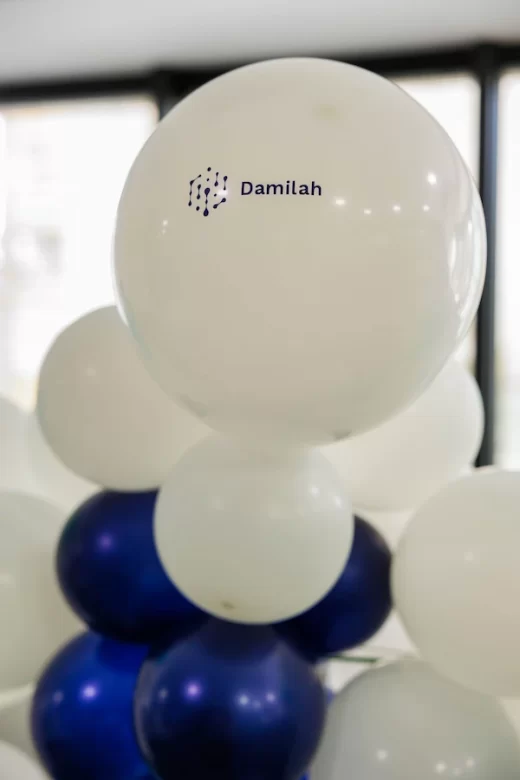
The founder of ‘Damilah’, Iain Bishop, highlighted to the guests at the opening the company’s values, the culture of continuous improvement and learning, the working environment in which the latest technologies and processes are used, the company led by experienced colleagues, and the environment that will help employees to build a successful career and to improve and upgrade their knowledge and skills. We are especially proud to build a culture of continuous professional development and mutual support.
He particularly emphasized the ‘Damilah’ Graduate program, which includes a four-month structured program that students will go through. With the Graduate program of ‘Damilah’, the participants are offered the opportunity for career development with an employment contract, and with all the benefits as company employees. The program is planned to last four months, during which participants will be exposed to all aspects of the software development cycle, technologies, processes and tools. Each participant will have the opportunity to gain practical experience, receive support, and develop and build key skills needed in the IT industry. They will use the latest and best technology and will be trained to create and complete innovative and quality solutions for our clients. At the same time, they will work and study in an environment, with experienced and dedicated colleagues who are proven professionals in the IT industry.
All students who are in their last year of studies or recent graduates can apply to this program.
Due to the rapid growth of the company, there is a constant need for new employees. The hiring process is continuous and we would like to encourage all IT professionals who want to change the working environment to apply for the open positions and join our “Damilah” team in our new modern offices in Skopje.
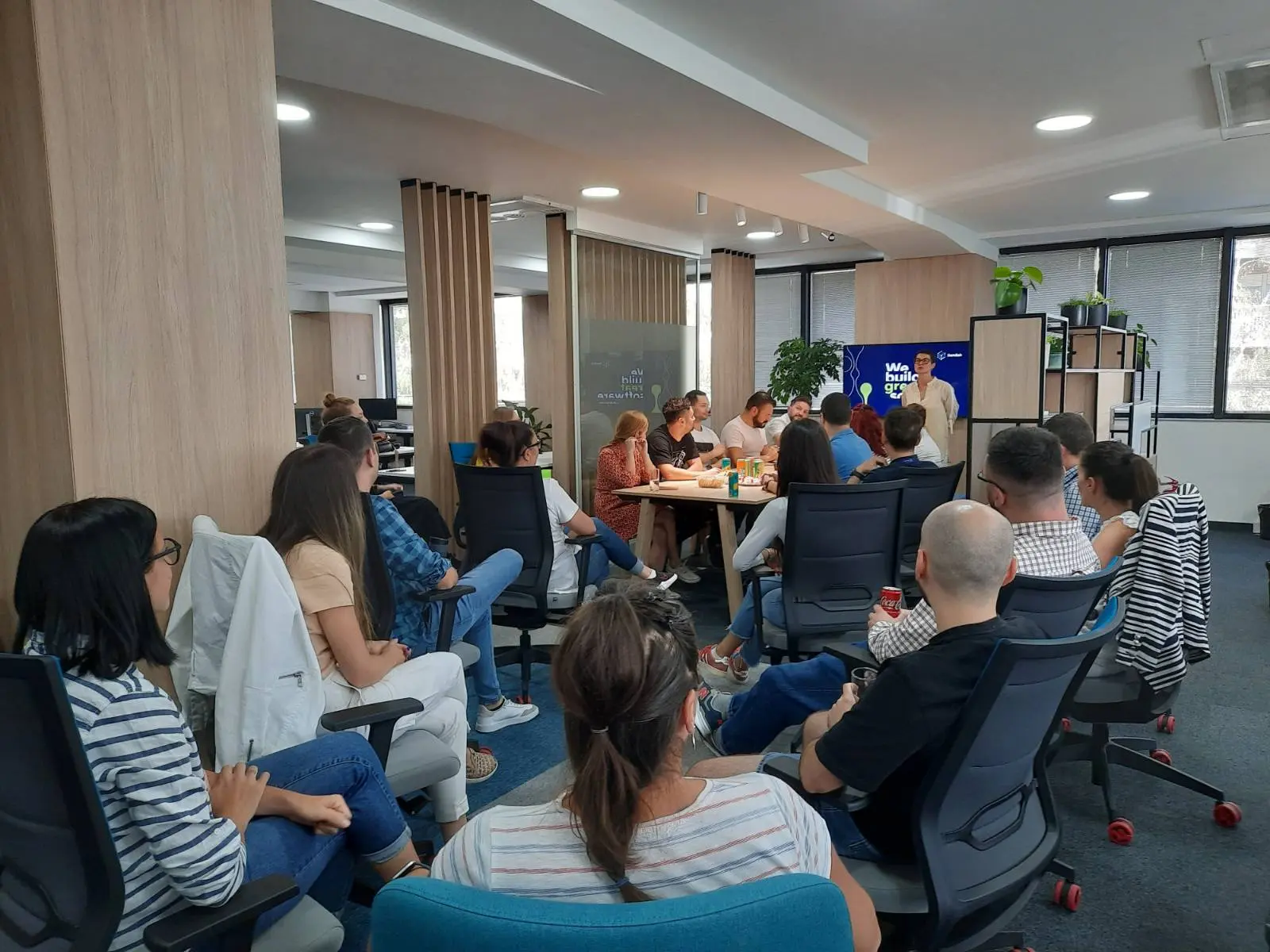
The Damilah Graduate Programme is a 4-month structured career programme with full employment and benefits.
During the programme, you will gain a deep understanding of our company, its values, culture, and the project.
You will experience all aspects of the Software Development Lifecycle, technologies, processes, and tooling.
Don’t miss the opportunity to use the best technology and create complete, innovative, and quality solutions for our customers, as well as build a strong network of professional and dedicated colleagues. The core team in Damilah consists of experienced and proven professionals in the IT industry.
If you are a last-year student or a recent graduate, join our Graduate Programme.
Apply at graduate@damilah.com.
The programme will begin in October 2025.
It’s never too late in life to have a genuine adventure. 😊
Hiking and happiness go hand in hand.
To convey that sense of achievement and remind us of how wonderful it is to break a sweat we went on a hike from Demir Kapija to the village of Chiflik.
